
N o 52 From Groupie Freaks to Tumblr Geeks | 18 The Future Is Funky: A History of Afrofuturism in Music | 20 The Revival of Pop Music | N o 72 Local Talent: Winkler | 14 The Power of 88rising | 24 Style and Sound of Lana Del Rey | 26 A BEGINNER’S GUIDE TO A BEGINNER’S GUIDE TO 이 달 의 소 녀 이 달 의 소 녀 northeastern students on music
Get Involved
E-Board President
Angela Lin
Gabriella Trinidad
Gianna Mattessich
Hannah Lowicki
Hunter Chan
Jaime Adams
Jess Gwardschaladse
Want to become a Tastemaker? Click on tastemakersmag.com
Vice President
Jacob Kemp
Jayden Khatib
Julietta Siciak
Kimmy Curry
get involved
Snapped some awesome photos at a concert? Email them to tastemakersphoto@gmail.com
Heard an album that really got you thinking? Send a review to tmreviews@gmail.com
Get More
Can’t get enough? Check out more original content on tastemakersmag.com
Become a fan on Facebook at facebook.com/ tastemakersmag
Follow us on Instagram: @tastemakersmag
Follow us on Twitter at twitter.com/tastemakersmag
Tastemakers Music Magazine 232 Curry Student Center 360 Huntington Ave. Boston, MA 02115 tastemakersmag@gmail.com
Trevor Gardemal
Editor-in-Chief
Chelsea Henderson
Art Directors
Jenny Chen
Megan Lam
Design Coordinator
Syd Tomasello
Collateral Designer
Alia Ziae-Mohseni
Promotions Director
Emily Greenberg
Photo Directors
Emily Gringorten
Kimmy Curry
Features Editor
Ethan Matthews
Reviews Editors
Henry Bova
Ananya Chaudhari
Interviews Editor
Desmond LaFave
Social Media Directors
Hannah Lowicki
Matthew Rose
Alexa Rand
Events Coordinator

Roshni Subramonian Treasurer
Michael DeVine Staff
Staff Writers
Ahaan Chaudhuri
Aki Gaythwaite
Alex Sumas
Alexandra Anderson
Alexandra Fu
Amy Oh
Ananya Chaudhuri
Ashley Hart
Bryana Dawkins
Cameron Alsop
Connor Briston
Dakota Castro Jarrett
Ev Ogier
Gabriel Winston-Bailey
Jess Gwardschaladse
John Buergler
Jonah Seidenfeld
Julia Towne
Juliana George
Justin Guthrie
Karl Adrianza
Katherine Miner
Keene Quiros
Lacie Foreht
Laurel Booth
Lillian Elwood
Lucas Cooperman
Luke Colombo
Matthew Lord
Michael Hirinda
Nora Holland
Olivia Leon
Rachel Cerato
Rilyn Szabo
Sarah Lamodi
Snehaa Ram
Terrance Dumoulin
Trevor Gardemal
Victoria Li
Wyatt DuPont
Zoe Iorizzo
Thomas Paulus
Camille Amaditz
James Ryan
Emily Greenberg
Art & Design
Alia Ziae-Mohseni
Ananya Kulkarni
Ava Ackerman
Caroline Xiong
Camille Wimpe
Catherine Terkildsen
Farah Caban
Haidyn Redmond
Jamie Tishkoff
John Nguyen
Juliana LaPara
Laura Mattingly
Maia Fernandez Baigun
Nick Alonzo
Sarah Liu
Xin Li
Promotions
Aja Binder
Alexa Rand
Bella Ramdayal
Chelsea Henderson
Desmond LaFave
Emily Greenberg
Hannah Lowicki
Lily Zanze
Matt Rose
Melissa Bernardin
Mica Kahn
Nadia Boudoukara
Nina Wilson
Phoebe Moore
Sofie Wendell
Trevor Gardemal
Yujin Jung
Photography
Adriana Olea
Alder Whiteford
Angela Lin
Anna Kelly
Ashlynn Braisted
Brinda Dhawan
Carol Michelle Beyda
Cayla Hoang
Charlie Bershatsky
Charlotte Hysen
Claire Adner
Elizabeth Scholl
Emily Greenberg
Emily Kobren
Emily Zakrzewski
Emma Lawson
Faith Nguyen
Genevieve Kopp
Hannah Bocian
Helen Cai
Isabella Pozzi
Jace Arrigali
James Paik
Julia Finocchiaro
Justine Tam
Kelly Thomas
Krista Brochu
Lauren Violette
Mantravadi Sairam
Matthew Rose
Max Rizzuto
Maya Solanki
Mukki Gill
Olivia Leon
Olivia Watson
Praagna Kashyap
Risa Tapanes
Rohit Gupta
Ronith Nambiar
Sebastian Wicke
Seha Khan
Sophia Seremetis
Sophie Quisenberry
Taliyah Fox
Victoria Brennick
Xander Greenway
Meet the Staff About Listening to Quote
Yujin Jung
Position Promotions
Major Economics and Computer
Science
Graduating 2024
Favorite Venue Yonsei
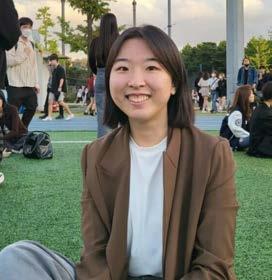
Amphitheater in Seoul, South Korea
Tastemaker Since Spring 2023
Ava Ackerman
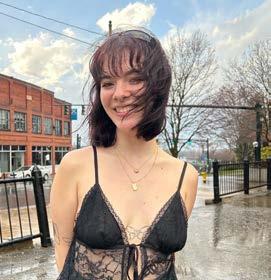
Position Designer
Major Marketing and Design
Graduating 2025
Favorite Venue House of Blues, Boston

Tastemaker Since Fall 2022
Lacie Foreht
Position Staff Writer
Major Communications and Media & Screen Studies
Graduating Spring 2023
Favorite Venue House of Blues
Tastemaker Since Fall 2019
Jace Arrigali
Position Photo
Major Media & Screen Studies and Philosophy
Graduating 2026
Favorite Venue Roadrunner
Tastemaker Since Spring 2023
Maggie Rogers
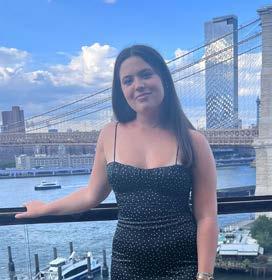
“Tim McGraw (Cover)”
MUNA
“What I Want”
Sonic Youth “Kool Thing”
“It do be like that sometimes”
The Internet
“La Di Da”
Erykah Badu
Mama’s Gun
Yves Tumor
Heaven to a Tortured Mind
“Working hard or hardly working??”
Lana Del Rey “How to disappear”
Amy Winehouse
“Take the Box”
Phantogram “Fall in Love”
“You’re kidding”
Radiohead In Rainbows
100 Gecs
10,000 Gecs
Phoebe Bridgers
Punisher
“You can never be too giggly - twitter user ShapedInternet”
 Samia, House of Blues
Photo by Emily Greenberg (Communications)
Samia, House of Blues
Photo by Emily Greenberg (Communications)
Cover Story
A Beginner’s Guide to LOONA
Breakthrough K-pop group LOONA has faced a string of legal challenges, which may be emblematic of larger issues within the industry.
Editorials
Strawberry Blonds and American Girls: Mitski and Fan Culture
As Mitski’s fanbase has grown progressively younger and more intense with her recent TikTok success, the oversimplification of her music could lead to an inevitable retirement.
The Power of 88rising: Fueling an Asian Creative Revolution
Deconstructing Social Media’s “Sad Girl”
The now-canonized “sad girl” genre may seem harmless, but it ends up enforcing gender-based binaries and racialized genre classifications.
Abuse Isn’t Punk, Man
Pop punk has seen a revival in recent years, which has revealed sinister undertones to many artists clinging to the genre’s name.
LA-based label 88rising has become a distinct creative space for Asian artists, and it doesn’t seem like they intend on stopping any time soon.
Summertime Sadness and the American Allure: The Style and Sound of Lana Del Rey
Staff Writer Bryana Dawkins investigates all-American artist Lana Del Rey’s stylistic shifts over her career.
8 14 16 28
Local Talent: Arden Lloyd
Following the TMM x GLR Battle of the Bands competition, winner Arden Lloyd talks Ani DiFranco, Boston house shows, and her upcoming single with GLR.
Local Talent: Winkler
Tastemakers sits down with one of the biggest Boston DIY bands about house shows, touring, and an upcoming tour.
Local Talent: Messina
Hear from local Berklee student and Mt. Greylock member Messina about his debut album, inspirations, and upcoming projects.
Tastemakers Presents: A Conversation with Mannequin Pussy
Following their headline show at this semester’s Tastemakers Presents, the band discusses punk, Philadelphia, and Charli XCX.
Album Reviews
Caroline Polachek, Gorillaz
Show Reviews
Sean Kingston, Weyes Blood
20
Reviews
34 36 Table of Contents Features Interviews
10 32
18 24 26
Life’s
Taylor
Su Sa Rockommend MUNA May 6 @ Roadrunner
so fun! American indie pop band, MUNA is coming to Boston. Head on over to Roadrunner on May 6th with “bag on your side cause
would be out till dawn!” Yujin Jung (Economics and Computer Science) Calendar May 1 Lizzy McAlpine House of Blues 2 3 Metronomy House of Blues Rufus Wainwright City Winery 4 Rebecca Black The Sinclair Charlie Winston/ Gabrielle Shonk The Red Room 5 6 MUNA Roadrunner 7 8 9 Goth Babe Roadrunner 10 Kali Uchis MGM Music Hall 11 Austin Millz Brighton Music Hall 12 Against the Current Paradise Rock Club 13 14 15 16 Tomorrow x Together Capital One Arena 17 Feist MGM Music Hall 18 19 Taylor Swift Gillette Stadium 20 Taylor Swift Gillette Stadium Hippie Sabotage The Eastern Joan Sinclair 21 Taylor Swift Gillette Stadium Blink 182 TD Garden 22 Indigo de Souza Royale 23 24 25 26 Boston Calling Harvard Athletic Complex 27 Boston Calling Harvard Athletic Complex 28 Boston Calling Harvard Athletic Complex 29 30 Paramore Madison Square Garden 31 Christian Lee Huston and Fenne Lily The Sinclair Mo Tu We Th Fr Taylor Swift May 19-21 @ Gillette Stadium
you
Swift
a
10
studio
to
Stadium for
nights
19-21.
4 new and 2 re-recorded albums
tour in
If you’re
for a ticket, You’re On Your Own, Kid! Matt Rose (Communications and Media and Screen Studies)
brings
taste of all
of her
albums to stage with The Eras Tour, coming
Gillette
three
May
She’s put out
since her last
2017.
looking
Boston Calling
May 26-28 @ Harvard Athletic Complex
Got any plans for Memorial Day Weekend? Well you do now: get tickets to Boston Calling Music Festival at Harvard Athletic Complex! Headliners include Foo Fighters, The Lumineers, Paramore, and Queens of the Stone Age. Don’t be silly and miss out!!!
Hannah Lowicki (Marketing)
Re:SET Festival
June 16-18 @ The Stage at Suffolk Downs
This new outdoor venue at the former horse racetracks will host a legendary festival all on one stage. Every single artist is a hit: Steve Lacy, James Blake, Toro Y Moi, Fousheé, Boygenius, Clairo, Dijon, Bartees Strange, LCD Soundsystem, Jamie XX, Idles, L’Rain, and more.
Emily Greenberg (Communications)
June 1 The Backseat Lovers Roadrunner Hayley Kiyoko House of Blues 2 Hippo Campus Leader Bank Pavilion 3 4 5 6 Charlie Puth Leader Bank Pavilion 7 Leith Ross The Sinclair Sampa The Great Royale 8 Pixies MGM Music Hall 9 Young the Giant Leader Bank Pavilion Summer Salt Paradise Rock Club 10 11 Palace Royale 12 13 14 15 16 Re:SET Festival The Stage at Suffolk Downs 17 Re:SET Festival Suffolk Downs Bebe Rexha House of Blues Dermot Kennedy MGM Music Hall 18 Re:SET Festival The Stage at Suffolk Downs 19 20 21 22 Tiny Habits The Sinclair 23 Billie Marten The Sinclair 24 lovelytheband Paradise Rock Club Teen Suicide The Sinclair 25 26 27 28 29 30 Su Sa Mo Tu We Th Fr
Local Talent
theBattleof Bands
Last November, Tastemakers Magazine partnered with Green Line Records (GLR) for the annual Battle of the Bands, a competition for Boston-area artists. This year, Arden Lloyd, a second year music industry student at Northeastern from Amherst, walked away victorious – and with a record deal with GLR.
Recently, Lloyd sat down with Tastemakers to discuss folk rock singersongwriter Ani DiFranco, Boston house shows, and her upcoming single with GLR.
This interview has been edited for brevity and clarity.
Tastemakers Music Magazine (TMM): How long have you been writing music? Have you always been interested in being a musician?
Arden Lloyd (AL): I think I wrote my first song when I was about 11. I was in piano lessons, and I didn’t enjoy practicing, so I’d make up my own stuff instead. I was just casually [writing music] and trying to convince myself that I should do something else, because music as a career is kind of like a taboo subject. My parents were always supportive and still are, which I’m really grateful for. But as I was applying to colleges, I knew that I just wanted to do music. It was never really a question deep down. And then the pandemic hit, and all I was doing was writing songs. I wasn’t doing anything else, besides schoolwork or whatever. I was just writing, writing, writing – on fire with music. And I was like, “okay, I can’t see myself doing anything else.”
TMM: And so far, you’ve released one EP, At This Moment, in 2021. When you released it, you said that it was stripped down and intimate songs, and “quarantine allowed for the time and space for that creativity to flow.” What was your process for that, and how was it maybe different from how you approach your music now?
AL: Well, I’ve been playing my music with just me with an instrument and my voice in my bedroom for a long time. I performed on trumpet with the jazz band, but it’s very different. And I wanted my first thing to be representative of all this time that I’ve spent just by myself writing the songs. I wanted it to kind of sound like you were sitting across from me in my bedroom. Now, I kind of want to actively stray from that, but also, that [sound] has a special place in my heart. The thing I’m doing with GLR is very different than my folk stuff. It’s much more involved. It’s based off of a demo that I wrote during quarantine as well. I was just learning how to use Logic and trying to produce my own music. I’ve been thinking about it for two years or so, and I think it’s finally going to happen where I combine those two things. I’ve been playing with a band for a few months, so that also kind of changes the way I’m thinking about my music. I feel like it really just enhances it. And being at school, embracing collaboration is very different. It’s something that I’m kind of new to, but it’s really exciting. It’s just an evolution. I don’t think I’ll leave [folk] behind, but it just all comes together.
TMM: You mentioned jazz band and trumpet. Do you hope to incorporate that into your music? Can we expect to hear any trumpet in future music perhaps, or just how you want to include that as an inspiration?
Designer: Haidyn Redmond (Business and Graphic Design)
Local Talent Spring 2023 8
AL: I can’t really play trumpet at the same time as guitar, but I have a trumpet in my band with me. And we’re recording some stuff now that will also have trumpet on it. I don’t play [trumpet] as much as I should now, but I’ve always really liked the sound, and it fits surprisingly well with my music.
TMM: And what are some of the biggest influences in your work?
AL: Probably my biggest influence or inspiration is Ani DiFranco. I grew up listening to her music, and my mom always played her in the car, around the house. She’s the epitome of a songwriter for me. She’s just mastered her craft so well, and I really adore her style. Maybe you don’t hear it 100% in my music, but I think the lessons I’ve learned from her are very, very present. Other than that, I listen to a lot of music, but I guess for the less folk stuff it would be like Björk and Beck. I [had] a Jacob Collier phase too – it’s just an extension of the jazz stuff. And you know, the modern jazz world of Snarky Puppy and everyone like that. Then in terms of folkier stuff, I got into Joni Mitchell over quarantine. I’ve been really, really into Adrianne Lenker and Big Thief recently. I feel like her style matches with Ani DiFranco’s in a way of lyrics that are punchy, or they have like a slight discomfort factor. Maybe you don’t hear it on the first listen, but you’ll read the lyrics and it’ll cause a kind of visceral reaction. It’s my favorite thing ever.
TMM: You play a lot of shows in and around Boston. I think I actually saw you at a show on Mission Hill. Six Feet Under? But how has playing shows in Boston been, and do you have any upcoming ones that you’re really excited about?
AL: It’s been a lot of fun. I just played at the Red Room last night, which was pretty great. Yeah, the house show scene is a funny scene to play in as a kind of quieter folk artist. And I haven’t played a ton, but the few that I have played, I was completely just like expecting people to just talk over me. But when I go at the beginning of the night, everyone’s quiet. Which is really cool for me, and I really wasn’t expecting it. It’s like the biggest compliment ever. In terms of upcoming shows, I have some things for Northeastern that I’m not allowed to talk about yet. But yeah, the ones I’m most excited about I think I have to be quiet about for a second longer.
TMM: Of course, well we’re excited to hear about them eventually. And so you won Battle of the Bands, and you’re releasing a single with GLR in May. How was your experience with Battle of the Bands, and is there anything you can tease about the single?
AL: Battle of the Bands was fun and a little bit strange because it’s like all people who I know who I was “competing against.” But it was a good experience. Being able to work with GLR is really cool. I’ve been involved in different departments of the club and Good Dog Licensing. Being able to work with friends in the studio is a lot of fun, and it’s cool to be doing something with GLR in this way. In terms of the single, I want to say it’s very different from the stuff that I’ve released. For me, it all comes from the same creative place,
so it feels more continuous to me than it would to outside ears. But it’s a little more pop, and it’s danceable, which not many of my songs are. I think we might be doing a music video, which is pretty exciting. I don’t know how that’s gonna come about. It’s really just very different than other stuff I have out, and so I hope that it’s a happy surprise for people. And if it’s not like, you know, I have other things too. I’m not leaving folk behind or anything like that.
TMM: You mentioned producing and getting involved with Logic. I’m assuming that you’ve been really involved with the production of the single as well?
AL: Yeah, we’re still pretty early in the stages. It took a long time to get the drums right just because the song is really drum-heavy, and that kind of drives the direction of the song. I’m very involved in how I want all of my music to sound like, whether it’s just guitar and vocals or something more intensive like this. And I plan to do a lot of the mixing too, of course with the people of GLR.
TMM: That’s very exciting, and I can’t wait to hear. But other than your upcoming single and the other things that you’re not allowed to talk about yet, what can we expect to see from you?
AL: Well, I think before the GLR single, I’ll be releasing a live version of the song off of my EP. I’m not exactly sure when that will come out. I’ve got to work on mixing a little bit over spring break. After the GLR release, I plan to release a two or three song EP of some stuff I’ve been playing live but don’t have recorded [yet]. So yeah, I can finally say new music is on the way.

9
Chelsea Henderson (Journalism and Communications)
Photo by @julianparkerburns via Instagram
Deconstructing Social Media’s “Sad Girl”
Our personalized algorithms have gotten increasingly more accurate at predicting our content consumption habits. Whether on Spotify or TikTok, it seems we’re constantly being fed perfect portions of the content that we crave, and most of the time, this consumption is so second-nature that we don’t question it. Such seemed the case with the Olivia Rodrigo-induced rejuvenation of the “sad girl.” Rodrigo was by no means the first successful sad girl in pop music. We can trace this back to Lana Del Rey’s 2014 smash single, “Sad Girl”; the sad girl pop of the early 2000s with Birdy, Avril Lavigne, and Alanis Morisette; or possibly the saddest sad girl anthem: Adele’s “Someone Like You” in 2011. The modern music industry has seen generations of sad girls making sad music – and much of it has beenis successful. However, as our consumption habits become more boxed in by our handheld algorithms, this distinction has become more prevalent, and we rarely question how the ethics behind this distinction impacts the actual artists that create our coveted sad girl bops. While on the surface this subgenre may seem harmless, it enforces strict identity-based binaries, making it near-impossible for certain types of artists to break into the sad girl mold because of their race, gender identity, or genre.
When looking up “sad girl” on Spotify, the top result is a Spotify-curated playlist, entitled, “sad girl starter pack,” which is described
as “sapphic songs that described your music taste as yearning,” filled with the likes of Ethel Cain, Phoebe Bridgers, Mitski, and Lizzy McAlpine. However, there were also a few songs by men that made the list. The criteria for a song performed by a man to make Spotify’s sad girl playlist is unclear. Is Matty Healy now a sad girl since the 1975’s “All I Need To Hear” made it?
There are many male-identifying artists making sad music across genre boundaries. From Zach Bryan to Rod Wave, we’re seeing men make sad music too. Why is it that there is no Spotify-created “sad boy starter pack,” or why can’t either of these artists be found on the “sad girl” playlist? All of these artists are making sad music, but the types of emotion that various “types” of artists and people are relegated to feeling contribute to the distinction.
When Katie Gregson-Macleod’s sad bop “Complex” took over TikTok mid-2022, her softly powerful, “I cry in his bathroom / He turns off the big light” didn’t interrupt our gendered ideas of what would be acceptable for Gregson-Macleod to sing about. However, traditional ideas of masculinity are not the biggest proponent of male vulnerability, tears, or sadness. In the eyes of the patriarchy, sadness is oftentimes synonymous with weakness. Therefore, in order for men to make “sad” music, they must break outside of the boxed-in definition of what masculinity

Spring 2023
10
Etcetera
means in order to even begin writing in this vulnerable way. In that way, Gregson-Macleod’s sad vulnerability is more acceptable than if it were a man singing, according to traditional gender roles. This patriarchal construct of sadness equaling weakness does a disservice to sad girls as well. In a way, their sad vulnerability is seen as unsurprising, uninterrupted of the emotions society assumes young girls to have. Sad girl music doesn’t deconstruct the imagined emotional boundaries of young women, while sad boy music is riskier, more interruptive. The patriarchy isn’t ready for the “sad boy starter pack” yet, but as more and more male artists continue to disrupt gendered emotional expectations within their work, maybe we’ll see trends in a similar fashion.
Another consideration in the gendering of the “sad girl” genre is the many artists who exist and identify outside of the gender binary. Are Claud and Sam Smith excluded from the “sad girl” movement as well?
Sonically, it seems that both of these artists have a lot in common with other singers found on sad girl spotify playlists. Claud, who is signed to Phoebe Bridgers’ subsidiary label Saddest Factory Records, makes music applicable to a similar palette as Bridgers herself or MUNA, one of Saddest Factory’s other big artists. However, their sad indie pop isn’t embraced by sad girl playlists with the same vigor that Bridgers’ or MUNA’s so frequently
is. Who is to say that if Claud and their gender wasn’t fully embraced into a more inclusive “sad” environment, their music wouldn’t receive the same kind of acclaim?
It is not only gender stereotypes that are exacerbated by the strict emotional gendering of “sad girl music.” Phoebe Bridgers’ “Kyoto,” the hit single off of her 2020 breakout album, Punisher, is frequently included in the sad girl canon. But the lyrics in “Kyoto” seem more mad than sad with Bridgers scream-singing “I’m gonna kill you / If you don’t beat me to it.” Similarly, Maryland-based rapper Rico Nasty is frequently known for writing her anger into her work – visible on singles such as “Rage,” and “Smack a Bitch.” However, Rico also exhibits a broad range of emotions on songs like “Easy” when she asks, “Like a knife to my neck / You hold up the mistakes I’ve made / Mess up my makeup / So my fans don’t think I was crying before I got on stage.” Are these lyrics not sad enough to show up on Spotify’s “sad girl starter pack?”
It’s impossible to analyze the gatekeeping of the “sad girl” genre without looking at the role that race plays. How is it that even Phoebe Bridgers’ purely rageful songs get

” 11
placed on the sad girl charts, but Rico Nasty’s most melancholy bars are still seen as just mad? The racial profiling of Black artists, and especially Black women, as angry, mad, and aggressive is undoubtedly at play here. Spotify’s “sad girl starter pack” has 75 songs on it. Out of all 75 songs, there was one by a Black singer. There were a handful of songs written or performed by Asian artists and a few Latinx performers, but the playlist was hugely run by white voices. The “sad girl starter pack” definitely implies sad indie pop, and indie pop’s race problem is one thing. However, when an entire mood, such as “sad,” is defined by this one very specific demographic, it's clear that it can cause harm to an entire world of artists making sad music, who for one reason or another (racism, sexism, etc.) can’t find recognition for making the music they are actually making.
Social media in other formats is obsessed with categorizing girls into boxes. On Tik Tok, the aesthetic of the “clean girl” – someone with a slicked back ponytail and small gold hoops who cares about gut health – has gone viral. This isn’t new. Girls have always been presented with a set of boxes to choose between and fit within in order to fit society’s standards of femininity. However, this set of boxes gets extremely harmful when only one type of person is allowed to be publicly sad. Based on the artists who have reached “sad
girl” acclaim on spotify and TikTok, only the bedroomish, synth-heavy, indie-pop, white girl artists are allowed to be sad and make money off of it.
Why aren’t we all allowed to be sad, regardless of gender identity, race, genre, or age? After all, isn’t that why we make music, to reconcile and process all of our emotions, not only the ones that are palatable? Rather than use our algorithms to build up walls and expectations around who is allowed to be sad, let’s use these wide-reaching platforms to interact with content that pushes gendered expectations, and appreciate vulnerability from a variety of perspectives and artists, even if they are not in the “sad girl starter pack.”
 • Katherine Miner (Music)
• Katherine Miner (Music)
Spring 2023 Feature 12
Designer: Laura Mattingly (Communications & Design)
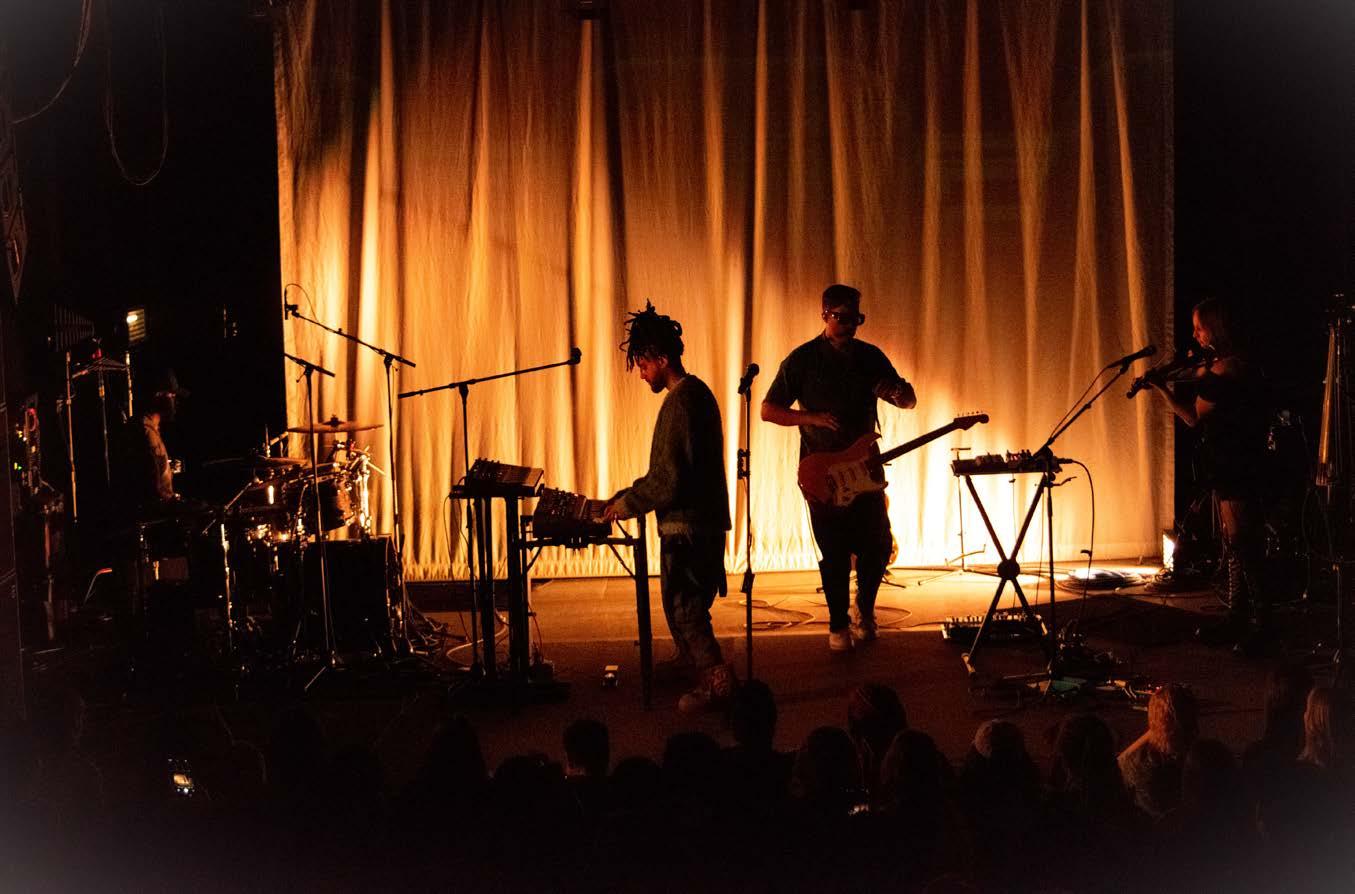
 Chiiild, The Sinclair
Photo by Brinda Dhawan (Electrical Engineering)
Elderbrook, Royal
Photo by Emily Zakrzewski (Civil Engineering)
Chiiild, The Sinclair
Photo by Brinda Dhawan (Electrical Engineering)
Elderbrook, Royal
Photo by Emily Zakrzewski (Civil Engineering)
Designer: Farah Caban (Business and Design)



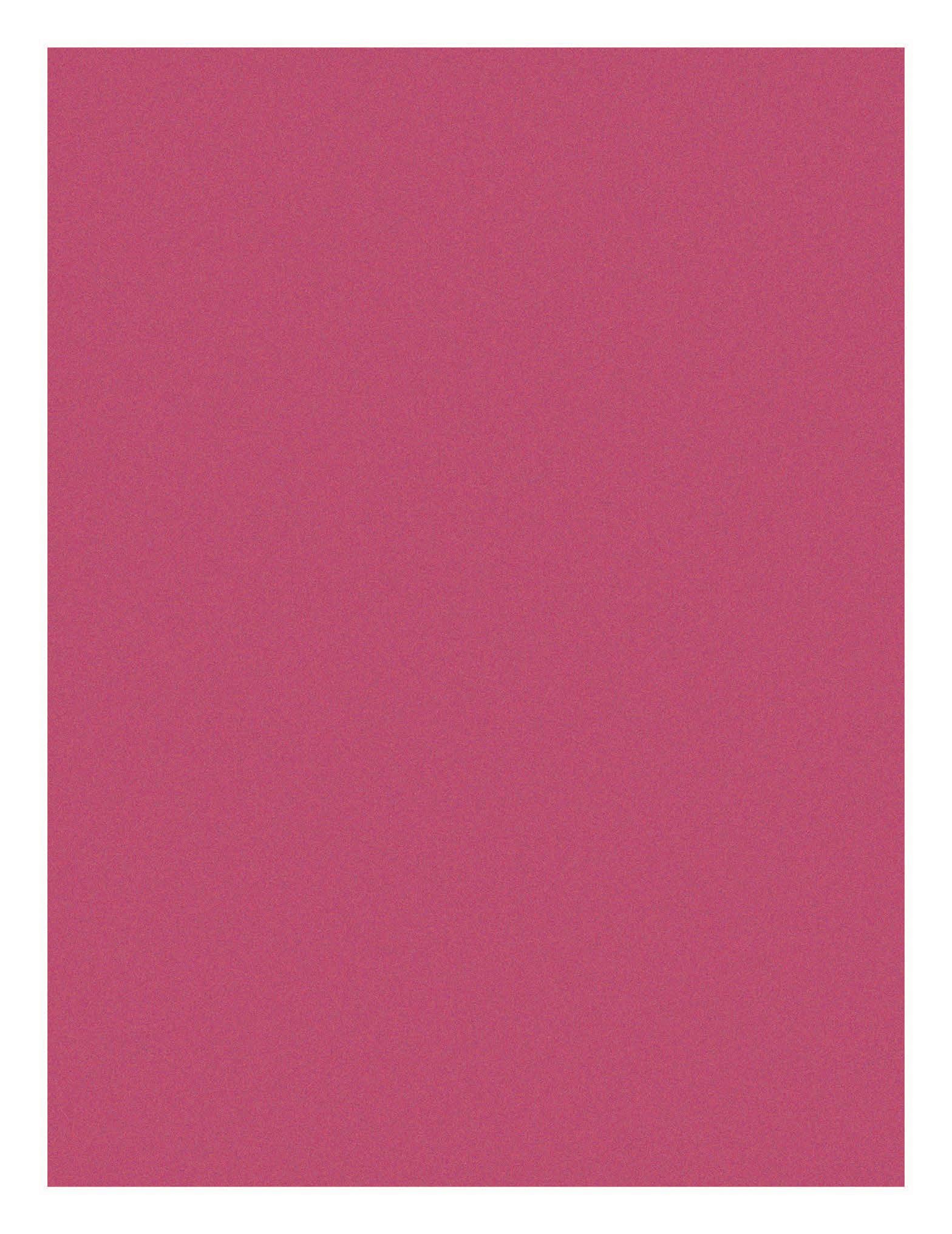



Local Talent
Winkler is a five piece Boston-based indie rock band made up of former Berklee students. With Justin Schaefers on guitar and vocals, Christian Schmidt on drums, Ava Connaughton on bass, Alex Massey on guitar, and Maddy Simpson on vocals, the group is one of the biggest names in the Boston DIY scene right now. They are hot off the release of their debut album, For You, Now and just finished up an East Coast release tour.
Tastemakers sat down with Justin, Christian, and Maddy to talk about it all: from how they got started, to opening for Faye Webster.
This interview has been edited for brevity and clarity.
Tastemakers Magazine (TMM): It seems like it’s been a very exciting time for you recently. What has the reception to your new album been like?
Justin Schaefers (JS): It’s been positive. No one has had anything bad to say about it. At least to our faces.
Christian Schmidt (CS): Yeah. Anyone who hates it hasn’t told us. It definitely makes us very happy to hear that people like it.
TMM: Your album release show at the Lily Pad in Boston was sold out – how was that?
JS: It was really fun, but it was very chaotic. There were just so many people on stage, and then there were a lot of people in the room too… The windows were fogged up outside. It was gross.
Maddy Simpson (MS): We encored with “Twin Snakes,” and the floor was shaking so hard. Halfway through the song I thought I was gonna pass out.
JS: Eph See was really great and Alex Walton was really great –those were the two other bands we had playing that night.
TMM: Were you expecting it to sell out?
JS: We would have picked a bigger room if we thought it was going to sell out because we wanted our friends to be able to go. Usually they can get a ticket the day of and it’s no problem. It was really cool but it was also a bummer that it was like, “Oh, you actually can’t come to the show tonight unless somebody else decides they don’t want to go.” But it was very nice to see that it sold out.
TMM: Could you tell me about how your band formed?
CS: Maddy and our other friend Curtis maybe like five years ago had started this thing called “Tiny Dorm,” which was a YouTube channel kind of like a play on “Tiny Desk” that they did in the dorms. I was friends with Maddy and Curtis, and they had Justin come on and he played a few songs. And that’s how we met.
JS: Christian was holding the camera I think. You were keeping it steady, you know, we didn’t have a tripod.
CS: Yeah. After that, we all kind of just became friends and started hanging out.
TMM: What’s your relationship to the Boston house show scene?

CS: Up until recently, pretty much all the shows we played were just the house shows here. And we love those the most I think.
JS: They’re great. That’s where we learned how to perform as a band, and it kind of shapes a lot of the live performances. Energywise, people kind of want to go crazy down there.
TMM: How has it been different for you playing basement shows after being done with college?


JS: I maybe recognize fewer people per gig. But that’s also a benefit – people are now coming to shows that aren’t just our friends.
CS: I think when we were in college and playing the shows, every show was like a show-party hybrid. We would party and drink and it’d be a whole thing. And then now if we drink at every show, we’d have a problem. (laughs)
Local Talent Spring 2023 14
TMM: You’ve done a good amount of touring and shows outside of Boston: on the East Coast, in the South, and even in California. How has it been branching out past Boston?






JS: It’s fun. Our first tour we did was in California, which was ridiculous because it was the farthest away we went. I can’t say everybody knew us and they probably weren’t the most fully attended shows, but it was great. And now when we go back, it’ll be even better. We went to Philly and New Jersey this past weekend. We came through there before, and it’s great, because then when you come back, three of those people that saw you before come, and they bring a friend. So it does kind of build.
TMM: Is it tough getting on bills in places that you don’t have as many connections to?
JS: It’s a lot of networking with other bands. If we get an opportunity to play with three bands in a town, then we know all three of them… or we know the owner of the house who knows someone that has another venue. It’s about those connections as you go.
CS: I think it definitely takes an “in.” Maddy does a lot of reaching out to house venues and finding a way into the circles in specific places and getting those shows.
TMM: Maddy, do you ever get discouraged while reaching out to people?
MS: I think sometimes it is discouraging…Usually when I’m trying to book in a new city, I reach out to 20 people or something crazy, and only hear back from two or three. But I just try to remind myself that it’s not that we’re bad. There’s so many reasons why somebody wouldn’t wanna book us or play with us or whatever. And that no answer doesn’t mean that we’re terrible people. Also, I try to break it up so I don’t get all the rejections in one day.
TMM: What would you say at this point has been the biggest moment for you?




CS: I felt really excited when the album came out, because for so long we had so little music out there. It feels like now we actually have something to show if people want to listen to us and hear what we’re about, whereas before it was like, “come to a show.”
JS: We got to play with Faye Webster at Northeastern. We didn’t meet her, though.

CS: We were super awkward standing in a group like “should we say hi?” and then we missed our chance.
JS: I wanted to say something about Faye’s yoyo-ing. It was really sick.
TMM: What’s next for Winkler?
JS: We are starting to record more. Slowly, but surely. We have a little tour coming up in April that’s also kind of New England. We’re looking at a West Coast tour as well in the springtime.
CS: I feel really excited to be working on the other songs. I feel like for so long we couldn’t really work on the new stuff because then we would’ve been procrastinating the album. It’s nice to be able to focus on things that feel a little bit newer.
JS: Yeah. This album that we just put out is essentially the best we can remember how we were feeling four and a half years ago. So it’s a lot of trying to get back to it. And I think we got it as close as we could and we’re very proud of it. But it’s nice to be able to be like, “This is what we’re doing right now and we can record it and release it.” So, very exciting.
• Emily Greenberg (Communications)
15
Photo by Rachel Owen
Messina Local Talent
A solo singer-songwriter, member of the band Mt. Greylock, and fulltime Berklee student, Messina is doing anything and everything to hone his craft. His first LP, Red Eye Conversations, was released in April 2021 following the onset of the Covid-19 pandemic, a stolen phone and laptop (with all of his work), and many other challenges. Now, Messina is looking backwards and forwards simultaneously.
Tastemakers recently sat down with Messina to reflect on Red Eye Conversations, its impact on his new projects, working in collaborative settings, drawing inspiration from his friends, and how he’s grown as an artist.
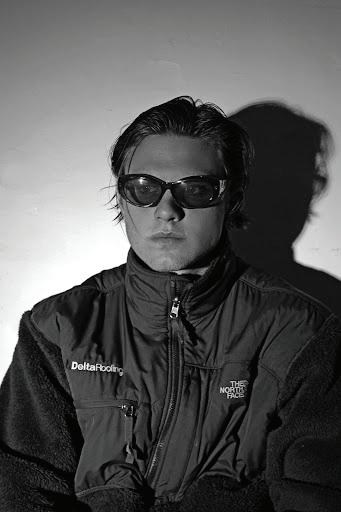
This interview has been edited for brevity and clarity.
Tastemakers Magazine (TMM): Your first album, Red Eye Conversations, came out in 2021. What are your reflections on that release?


Messina (M): I’m so glad I put it out. I don’t believe all of that’s my best work. But those songs needed to come out to establish a lot – more internally for me – that I’m thinking outside the box. But it wasn’t curated in the right way. And the fact that people are still listening to it is really good because I know that there’s something within the sound and I think I’ve grabbed what’s good from that album. I learned so much. Putting out music is a long process. A lot of people don’t realize that, and I didn’t realize that. I learned how touchy it is, how hard it is to be an independent artist. So making those, you know, it was a learning experience. At the core.


TMM: What is your favorite track you’ve released so far?
M: That’s a great question. It would probably be one of the first three tracks: “Party Next Door,” “Decide” featuring Timothee Alex, or “Child’s Play,” because I think those are three of the songs that I’ve taken the most from with my new stuff.
TMM: You were in the process of creating Red Eye Conversations when the pandemic hit. How do you think that the pandemic affected the album and your musical process as a whole?
M: Well, it put me in a room by myself for months. There are lyrical things that I talk about within that album that reflect on what was going on in the world. And I think that I grew up so much during that time. I was 20 when I put that album out, and I spoke very, very reflectively. I was sitting in my apartment, here in Boston, which was bare. There was nobody living here, so I was skateboarding around Boston all the time, by myself, taking videos, and just kind of feeling very dystopian, very thoughtful, very existential. And I think that came out.
TMM: Who are some artists you draw inspiration from?

M: Men I Trust is probably my biggest influence. Along with Radiohead, they’ve always been an influence on me. But the interesting thing that I find is coming out in my music a lot, because I listen to so much R&B and a lot of Dream Pop, is ethereal sounds. Finding the fuse, that mix between the two, is becoming really cool.

Spring 2023 Feature 16
TMM: Who have you been listening to recently?
M: I had a feeling this question was coming! I’ve been listening to T&T, Tim and Tahi, this extremely talented R&B duo. They dip into pop, funk bass lines, and they have a lot of new music coming out. They’re local and they’re awesome.
TMM: Do you have a dream collaboration with any Boston artists?
M: My friend Harry Jenko runs this management team called “Afterlife” that is completely running the SoundCloud underground rap scene right now. And they’re fucking killing it. I’d love to get in rooms with them and work with them in a studio sometime. Oh, and the people over at Tiny Habits. They’re absolutely killing it.


TMM: Any new projects coming up?




M: Right now I’m just tailoring my release plan. I’m going to drop an EP in April. Then, drop a single – but with some B-side tracks – and then drop another EP and then another kind of maxi single thing and space those out month to month to month. I’m really just touching up stuff and mixing. I’m a big project person, you know, I like stories. I don’t know if I’ll drop an album for a while. With Red Eye Conversations, part of that learning experience was that people have fucking short attention spans these days. Giving people sample sizes and leaving them wanting more is better than giving them a lot and having them get bored.
TMM: What’s different about the creative process for your upcoming projects versus REC?


M: Live instrumentation. Living at Greylock has given me access to pretty much every instrument that I could ask for… I’m writing music now with the thought in mind of “this is going to need to be played live at some point” and “how do I cater it to that without taking away from the experience of the record.”
TMM: You’re a part of Mt. Greylock, a band with three other Berklee students, who are also your roommates! How has this experience influenced your outlook on live music and collaborative projects?
M: Completely different. It’s the first time I’ve been in a real band. Writing with other people, my outlook has changed a lot. Interacting with other musicians on a stage consistently and having a set core of songs that we play all the time, and having people coming to our shows wanting to hear those songs, was something that was completely new to me. In regards to performing, I’ve never performed in my life like I’ve performed with Mt. Greylock. If you told Freshman Year Joe that he was going to be not only playing house shows, but running the damn thing, and being the soul, he wouldn’t believe you. I see so much growth. Moving in with these guys, it changed my life. I don’t know where I’d be without Mt. Greylock.
TMM: Is there anything you can tease about your upcoming album?
M: Expect music that you want to put on when you’re on a long drive. Warm music. With a lot of bass.
• Rachel Cerato(International Affairs and Environmental Studies)
17
Designer: Nicholas Alonzo (Architecture)
In February, critically acclaimed singer-songwriter and internet darling Mitski replaced her website with an image of a closed door, taking down her merch shop and tour dates. The same image was posted on her Twitter account, sparking anxious theories that the dreaded time had come: Mitski has finally had enough, and this was her dramatic retirement announcement.
As the initial panic wore off, fans recognized the door as the one used in Mitski’s Laurel Hell tour set and came to the far more reasonable conclusion that Mitski was simply announcing the end of Laurel Hell as an era. If anything, this cryptic messaging is likely a sign of a new project, rather than a total retreat from music. So why was everyone so confident that Mitski was retiring?
The short answer: Mitski’s had a less-than-ideal relationship with fame. She’s been a significant name in indie rock since 2014, but after the release of Be the Cowboy in 2018, the artist quickly went from cultivating a sizable cult following to becoming the face of “sad girl music.” Her song “The Only Heartbreaker” was even featured in former US president Barack Obama’s top songs of 2021. Like many other contemporary music sensations, her rapid popularity owes much to social media. Many of her songs have gone viral on TikTok, and the community dedicated to her call themselves “mitskitok.” But Mitski herself has not been active on social media since 2019 when
Blonds and AMerican GIrls: Editorial 18
she left her various accounts to her management. In fact, Mitski is one of the few private mega-celebrities left. This has not gone unnoticed — a quick Google search of Mitski displays the question, “Why is Mitski so private?” The artist has expressed her distaste for being a public figure time and time again. Still, her staggering popularity makes privacy difficult, especially when her fans are notorious for their dedication.
As Mitski’s fanbase has grown progressively younger and more intense with her TikTok success, her relationship with her fans has been occasionally fraught. In February 2022, Mitski’s management posted on Twitter: “A note from Mitski: Hello! I wanted to speak with you about phones at shows… When I’m on stage and look to you but you are gazing into a screen, it makes me feel as if those of us on stage are being taken from and consumed as content, instead of getting to share a moment with you.” This tweet prompted an intense and vehement debate about the role of phones at concerts, with many fans accusing Mitski of being insensitive toward people with ADHD, anxiety, depression, and whatever else they could fling at each other in the replies to win their respective arguments. Eventually, the argument became so heated that Mitski’s Twitter account deleted the tweet altogether.




Strawberry Mitski and Fan Culture Spring 2023
The conversation about how artists and their music are being reduced to an easily consumable product is much larger than Mitski, but few examples are as clear and depressing as how Mitski’s fans water down and neuter her art. In an especially blatant example, her song “Strawberry Blond,” which discusses her complex relationship with Eurocentric beauty standards as a Japanese-American woman, has been reduced to a “cottagecore” anthem. This is particularly bizarre when considering how the aesthetic idealizes a very white, almost settler-colonial approach to rural living. Parodies of her songs, like the TikTok viral “Strawberry Cow,” drive home how little many of these fans are willing to engage with Mitski as an artist. Instead, Mitski has become an artist that you must listen to if you are a particular type of person — if you dress a certain way, watch certain TV shows, read certain books, et cetera. Her work is diluted into this amorphous, aestheticized identity that values her as a maker of “sad girl music” instead of as an artist.



“Strawberry Blond” is only one example of countless Mitski songs that are sanitized by audiences in order to express more generic, widely-consumable adolescent angst. Fans see Mitski’s work as outlets for their own pain and in the process ignore and erase anything inapplicable to a more generalized sense of suffering. Songs like “Your Best American Girl” are impossible to interpret without considering difficult topics like race and gender. Without these themes, the song all but ceases to exist lyrically. It becomes yet another capital S-Mitski Song, something you listen to if you are a particular type of person with a particular type of aesthetic.
And so we return to the closed door. After a difficult year of touring, being swarmed by teenagers and called “mommy,” staring into phones instead of faces, and being attacked on Twitter for voicing her feelings of disconnect, it’s no wonder that many fans jumped to the conclusion that Mitski was saying goodbye to music, at least for a while. Her treatment as a public figure veers wildly from ceaselessly adoring to aggressively critical, all while her fans dilute her music into its most neutral, easily consumable form of generic adolescent angst. Mitski is not the only artist being treated this way — the reduction of music to easily marketable and consumable aesthetics and identities is not an issue that can be tied to one artist alone, but Mitski’s widespread fame makes her an excellent case study for this phenomenon. Retirement announcement or not, the conclusion to Laurel Hell provides a much-needed opportunity for fans to evaluate their relationship with Mitski and her music.
• Ev Ogier (English)
19
Designer: Juliana LaPara ( Graphic Design )
A BEGINNER’S GUIDE TO A BEGINNER’S GUIDE TO

After a groundbreaking launch in 2016, K-pop girl group LOONA appeared to be destined for the stars. The twelve members of the group checked all of the boxes for a successful group; a cult following, strong artistic vision, television appearances, and breakthrough international recognition all pointed towards success for a new and innovative group. But seven years later, the group has seemingly fallen apart, leaving all with the question: what happened to LOONA?
In order to understand LOONA’s breakthrough success, it’s important to understand the industry that it emerged
from. Over the past decade, Korea has established itself as a global powerhouse in the pop music industry. Groups like BTS and BlackPink have expanded into American music charts with a popularity that seems larger than life itself. Known for large ensembles that sometimes surpass twenty members, as well as performances driven by complex group dances, k-pop fills a niche that does not exist within American music. This is, in part, thanks to the distinct management strategies that are utilized by Korean record labels. While the American music industry favors the image of a “self-made” musician
and organically-formed bands, the k-pop industry operates in a way more akin to the movie industry, with a rigorous training and audition process for aspiring musicians.
The process for putting together a k-pop group is executed by large media conglomerates, which take on the roles of record label, creative directors, talent acquisition, and financiers. BlockBerry Creative is one of these media groups, though its size pales in comparison to the virtually limitless resources of entertainment groups such as BTS’ parent company, HYBE. Despite its low budget and smaller scale, Blockberry Creative’s sole group is one of the most interesting to breach the international market: the elusive and whimsical LOONA.
When LOONA first came onto the scene, it immediately set itself apart from other groups by inverting the standard pattern for a k-pop launch, which typically introduces the entire group before singling out specific members in solo songs. LOONA – whose Korean name, 이달의 소녀, translates to “girl of the month” – debuted each of its twelve members one at a time over the course of eighteen months. Each girl was launched with two solo songs and an accompanying music video, which built anticipation for the following month by teasing who the mysterious next member might be. They were each given their own personality and intrigue through an associated color, animal, and city. Take Go Won, the penultimate girl to be announced
Cover Story 20 Spring 2023
(and godmother to Grimes and Elon Musks’ child), for example. In her “One&Only” music video, she sits down at an ornate dining table to eat a pineapple and sings against a backdrop of blue butterflies, signifying her animal and fruit. The larger supergroup was broken down further into “subunits” of three or four members, each launched with its own EP. By the time LOONA’s debut single “Hi High” was released in 2018, songs like Kim Lip’s solo “Eclipse” and subunit ODD EYE CIRCLE’s “Girl Front” had already amassed a cult following for the group.
LOONA’s founding vision wasn’t just to create another girl group – it was to create a whole world. The LOONAVERSE is the name given to the fantasy world inhabited by the group’s members, and its finer details teased out through bits of lore sprinkled throughout LOONA’s various music videos and albums. Fans of the girl group, called “Orbits,” are as much the architects of this world as the group’s directors, and the most dedicated devotees parse through any and all LOONArelated media with a voracity only rivaled by that of Swifties or Larry shippers.
Orbits are in part responsible for the international recognition that the group has garnered. What began as a cult following gained the broader status of a niche internet meme through a simple, yet effective rallying cry: “stan LOONA.” Three years ago (which may as well be a millenia in internet time), the phrase could be found in nearly any viral Twitter thread if you looked hard enough. Any problem – whether it was a broken bone or former US president Donald Trump’s productivity – could be solved with the simple act of stanning LOONA. It didn’t matter if the recipient or the poster actually liked the K-pop girl group, the solution to any problem remained the same: stan LOONA.
The explosiveness of this niche meme coincided with the release of LOONA’s
이 달 의 소 녀
이 달 의 소 녀

21
first EP, [+ +], catapulting the group into mainstream success. The English single “Star” from 2020 mini-album [12:00] went so far as to land on Billboard’s top 40 pop radio charts. LOONA is only the fourth K-pop group to land on this list, and only the second Korean girl group to do so. In 2022, the group embarked on its first world tour and was set to release a new album titled The Origin Album: 0 in 2023.
While all signs pointed towards the group’s growing success, all was not what it seemed behind the scenes. On tour, cracks began to show regarding BlockBerry Collective’s management practices for the group. One of the group’s most beloved members, Chuu, announced from the start that she would not be joining the rest of

the group for the tour. For the other eleven members, it became overwhelmingly apparent that the women on stage were being severely overworked. First, BlockBerry announced that Choerry would be sitting out of the European leg of the tour due to health concerns. Other members were soon to follow; Haseul and Yves were also unable to perform in Europe, and other members announced that they were too unwell to attend meet and greets. Signs of the groups’ fatigue showed on stage, with members visibly struggling to make it through rigorous choreography. During LOONA’s performance in Mexico, fans captured videos of Yeojin collapsing to the floor after fainting on stage. Though not as visibly dramatic as the injuries sustained by her touring
counterparts, Chuu’s absence from tour was pivotal in demonstrating the internal issues that the group’s members were faced with. In November of 2022, Chuu was removed from the group by BlockBerry Collective, which claimed she used violent language and was abusive towards staff. Perhaps this story would have effectively discredited Chuu, if it were not for the fact that the media conglomerate had built LOONA’s entire world around the individual personalities of its idols. Chuu had long been one of the most beloved members, known for her sweet disposition and bubbly personality. Fans were skeptical of BlockBerry’s unsupported claims, and other members voiced their support for Chuu. She eventually filed a lawsuit against BlockBerry Creative, and spoke out against
LOONATHEWORLD.exe
“Any problem... could be solved with the simple act of stanning LOONA.”
Cover Story 22 Spring 2023
the organization’s abusive practices, which included not letting the members outside for more than twenty minutes during work days.
Chuu was joined by nine other members in attempting to take legal action against their management company by terminating their contracts. Of those nine, four were successful: Heejin, Kim Lip, Jinsoul, and Choerry. While the other girls are still contractually bound to BlockBerry Collective, the group’s future can be described as unclear at best. The release of the new album was indefinitely suspended, with BlockBerry claiming that it did not have the finances to support an album roll-out. Even if the collective does attempt to release an album in the future, Orbits have sworn to boycott future LOONA releases in defense of their idols.
From where it stands now, it appears most likely that LOONA as we know it

has come to an end. Most of the group’s members have publicly voiced that they are unwilling to continue working with BlockBerry, and the suspension of the new album implies an indefinite hiatus. The group’s popularity has not waned, however, begging the question of whether or not we might see the group perform again, just without their corporate backing. Recent cases in the Korean entertainment industry have weakened the hold that media conglomerates have over their performers’ creative control. The five members of 1990s k-pop sensation H.O.T. recently won a battle with their former producer over their rights to use H.O.T.’s name and logo in reunion appearances. Kim – a former producer for SM Management, the conglomerate responsible for groups such as Red Velvet and NCT – argued that held the exclusive trademark rights to the group, but ultimately
lost the case as well as the rights to the group. This isn’t to say that LOONA will similarly reunite, but both legal battles point towards improved workers’ rights for Korean music idols.
With all of the glamor and allure of the entertainment industry, it is easy to forget that our favorite musicians in any genre are still workers and performers. Though LOONA appeared to exist in a carefree fantasy world, the whimsy and happiness of its members proved to be more of a facade than anything else. Chuu and the other members’ break from BlockBerry Creative shone an important spotlight on the complex relationship between idol and management company, proving that everything may not be as it seems.
• Jess Gwardschaladse (History, Culture, and Law)
23
Designer: Syd Tomasello ( Graphic Design )
“88 means double happiness” is a mission statement quietly buried in the depths of Youtube video descriptions for 88rising, an LA-based label and media company that in recent years has become so much more. While Asian artists are increasingly able to achieve crossover success in the West through mediums like K-pop and anime, 88rising has grown into a unique collective where artists from all across the diasporic spectrum can position themselves in global mainstream culture. By curating a deep musical roster and focusing on in-house production, 88rising continues to create space for Asians in the creative arts – and it doesn’t seem like they intend on stopping any time soon.

Double Speed: Rapid Growth in the Internet Era
The Chinese character for 8 (八) is pronounced similarly to the character for prosper/wealth (發), making it an especially auspicious number. Thus, naming a business venture after it was a logical move for 88rising founder Sean Miyashiro, who was born in San Jose to Korean and Japanese parents. His Bay Area upbringing cultivated an appreciation of hip-hop culture and experience navigating within ethnic enclaves. The establishment of 88rising in 2015 came after seeing how badly his Asian peers were struggling to find traction in
the industry across all fields. Miyashiro was determined to create a platform that could not only tap into the lucrative Asian market both domestically and abroad, but also provide artists with tools for crossover success. The label’s first huge break however, came from an unexpected source: a cooking tutorial.
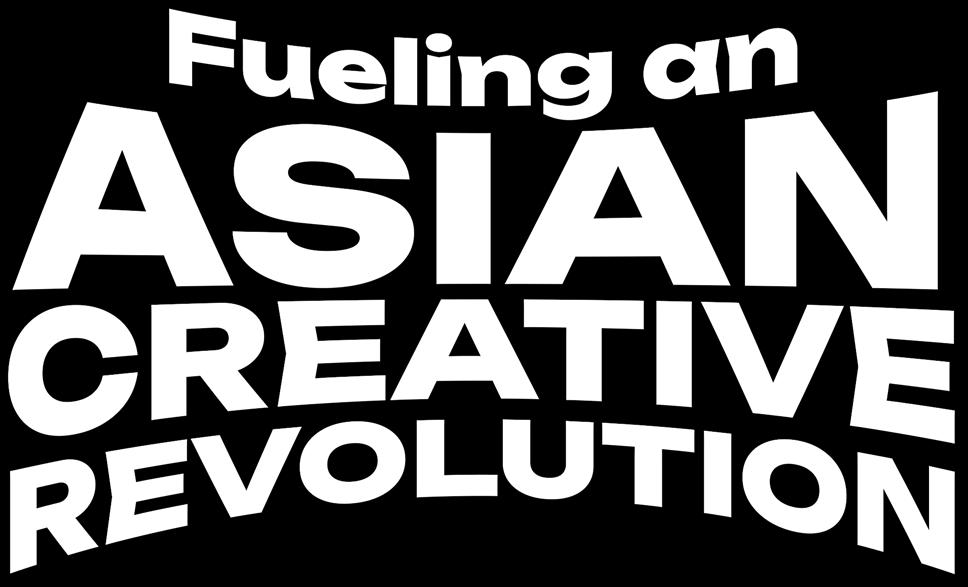
Indonesian-born rapper Rich Brian (Brian Imanuel) was 15 when his Youtube skit on how to properly microwave a sliced bread went viral in 2016 for its deadpan delivery and commitment to the bit. Soon after, his visual for the controversial “Dat $tick” also made waves online for its sheer audacity, if not musical quality. Equipped with a pink polo shirt and fanny pack, Imanuel drawls about popping shells for a living and Maseratis in a uncharacteristically deep baritone, all while posturing in front of a midsize sedan. Miyashiro recognized the teen’s genuine talent through the noise and made him one of 88rising’s first signees.
One of the long-running concerns with hip hop being the core of 88rising’s musical identity has been that of cultural awareness. Imanuel’s original stage name “Rich Chigga’’ is reflective of his unsupervised childhood on the Internet, as is his brief usage of the n-word in “Dat $tick.” Miyashiro was cognizant of this, but in addition to letting Imanuel educate himself and eventually apologize, he also took the internet notoriety as a chance to build a foundation for media

(
Administration ) Spring 2023
24
Designer: Phuc (John) Nguyen
Computer Science & Business
Editorial
production. As hubbub brewed, the track and video were taken to events like SXSW, and rappers like Ghostface Killah, Cam’ron, and 21 Savage were invited to react on camera. The resulting compilations were incredibly popular on Youtube, and the discourse – positive or critical – slowly but surely raised Imanuel’s status from controversial gimmick to viable musician, and provided Miyashiro with new avenues for collaborations and industry connections. Since then, 88rising has thrived by living at the periphery of the Internet, and harnessing this to target an eager audience for Eastern trends in the West is something that no other media company has done before.
Double Notes: Assembling a Musical Lineup for the Global Stage
88rising’s other prominent strategy is utilizing their global artist roster. Miyashiro has made a point of signing artists from underrepresented areas (even within Asian music), and emphasizing a collaborative and intercultural creative environment. Joji (JapaneseAustralian), NIKI (Indonesia), and Jackson Wang (Hong Kong) are just a couple examples of artists that vary in their places of origin, musical influences, and even their degree of success prior to signing. Joji had an extensive, if not controversial, career as a Youtuber as “Filthy Frank”; NIKI was an unknown studying music in college; and Wang had almost a decade’s worth of experience in K-pop group GOT7 before going solo.
88risings’ penchant for signing from all walks of life and musical styles contrasts with American labels that trap budding artists into predatory contracts, and the Eastern standard of hand-molding young trainees into calculated products. The label’s now extensive lineup proves that having a diverse mix of artists can lend incredibly well to the creative process and also to capture international audiences, forming a unique brand of music that varies wildly with every release but still remains identifiable as their own.
Double Happiness: Recent Successes and Building Momentum
88rising’s breakthrough came in 2021, when it was announced that the label would executive produce the soundtrack album for Marvel’s “Shang Chi and the Legend of the Ten Rings.” Like Kendrick Lamar on the “Black Panther’’ soundtrack and Beyoncé on Lion King: The Gift, the 88rising roster was allowed to run wild under a broad theme, creating a variety of tracks from ballads to electro pop bangers with a wide slate of collaborators. Western juggernauts like Anderson Paak. and DJ Snake were placed alongside Eastern artists like Zion T and JJ Lin, demonstrating how easily crossover collaborations could come together and how effective the results could be.
Success continued into the following year with a massive slot at Coachella. In a triumphant showcase of Asian music, J-Pop royalty Hikaru Utada made their first ever appearance at a US festival, and Korean legacy girl group 2NE1 (think Seoul’s Destiny’s Child) reunited onstage after disbandment. The label has now moved to strengthen their own event production, with their signature Los Angeles music festival “Head in the Clouds” becoming an annual hub for fashion, art, and cuisine. The popularity of the festival has produced global offshoots in Manila and Jakarta, with an NYC iteration coming this summer.
With a steady stream of musical output established, 88rising has begun to look for opportunities to demonstrate both the breadth of their cultural impact and financial draw. They’ve begun the difficult juggling act of reaching out closer to the pulse of mainstream culture,
while also reaching inwards to strengthen their artistic infrastructure by producing events by themselves, for themselves.
未來呢?: And what of the future?

Growing up, opportunities to see Asians like me represented in the arts were far and few between. There were the Jay Chous, the Jolins, and the EXOs, but being Asian-American meant I would forever be on the outside looking in, constrained by my Western upbringing and clumsy language skills. While opportunities for representation have changed, the global pandemic and the wave of anti-Asian vitriol that accompanied it stands as a reminder that despite our progress, there remains a vocal audience that refuses to respect our identity.
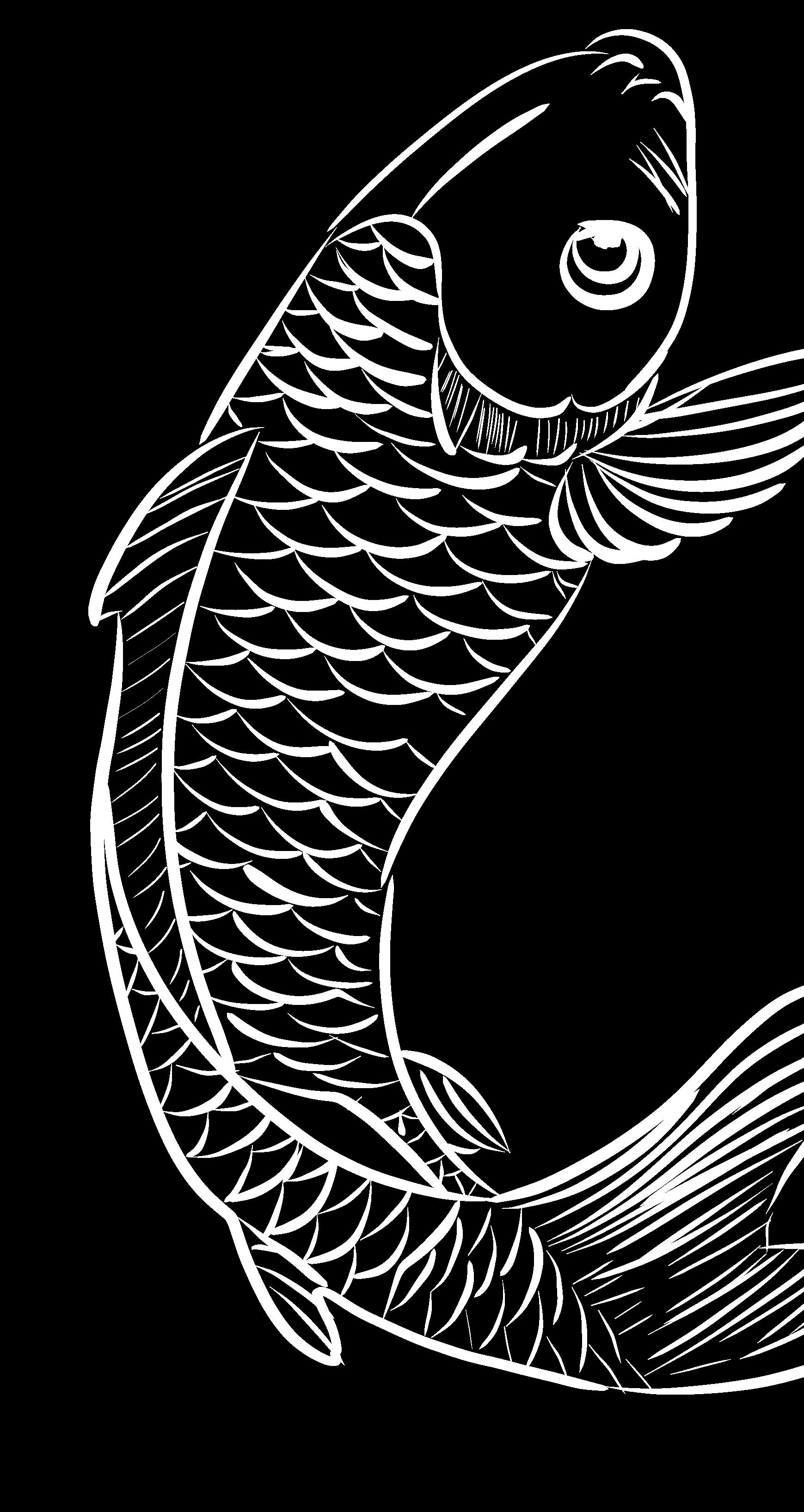
88rising to me is a powerful totem, an amplifier of the creative capabilities of everyone touched by the Asian diaspora. The collective has work ahead of them to be representative of different cultures and musical styles, but I can’t help but be hopeful for the vision that they present. One where Asian music, art, and culture can flourish, and our happiness doubles with it.
Jonathan Shia ( )
25
Lana Del Rey’s single “A&W” was released ahead of her highly anticipated album Did You Know That There’s a Tunnel Under Ocean Blvd on Valentine’s Day. The seven minute track, infused with elements of trap and folk, perfectly encapsulates Lana Del Rey’s signature style and sound. From her beginnings as a Tumblr icon during her Born To Die and Ultraviolence eras to her current status as a respected alternative powerhouse, Lana Del Rey has developed and refined her aesthetic while still remaining true to her original vision. While Lana Del Rey has experimented with her sound and varied her style throughout her career, some themes in her work remain constant — Hollywood glamor, drugs, melancholy, and codependent relationships. On her debut album Born To Die, Lana Del Rey introduces her listeners to her fantasy world, and on her fourth album, Honeymoon, she expands on her view on idealized love established in earlier works. The iconic breakout hit “Summertime Sadness” from her debut album details the ephemeral beauty of a summer fling, and singles “National Anthem” and “Blue Jeans” reveal Lana Del Rey’s obsession with the 50s and 60s. She mentions American actress Marilyn Monroe, famous during the 50s, on “National Anthem” and again on “Body Electric,” a track from Paradise released the same year after Born To Die. Additionally, she smoothly croons “It was like James Dean / For sure” on “Blue Jeans,” referencing her adoration of yet another 50s celebrity. Her larger than life persona, created to emulate mid-20th century Hollywood starlets, characterizes her early style and bleeds into her music. With a blended pop-esque and trip hop sound that swells and recedes under her vocals, her music conveys the same dazzling American charm as her lyrics. Lana Del Rey’s starry-eyed naivete is subdued with her portrayal of Californian love on Honeymoon. With a newfound lyrical maturity, she explores romance through a more retro lens. Single “High By The Beach” simulates the experience of being stoned through distortion and
haze, but the distortion also suggests something dark about her relationships — her lovers are like drugs, and she’s addicted to them. In her picturesque Californian daydream, full of sunshine and undying passion, Lana Del Rey once encounters the violence she left behind during her third album’s era; on the soft and stripped down single “Honeymoon,” Lana Del Rey slowly sings “We both know the history of violence that surrounds you / But I’m not scared, there’s nothing to lose now that I’ve found you.” There’s something haunting about her love and her music — some songs feel more like lamentations than romantic summer anthems. However, that devastating quality that underlines her work reveals her talent as a songwriter. Her multifaceted style is both sweet and sad, nostalgic for a historic period she connects with but never got to experience.
On Lana Del Rey’s guitar-driven third album Ultraviolence, she explores a darker and more relaxed side of the American consciousness. Her lyrics are more literary, melancholic, and graphic than on Born To Die and Paradise, and have a cinematic quality to them. On the brooding and languid “Shades of Cool,” Lana Del Rey expresses the pain she experiences trying to fix her lover, and on “Sad Girl,” continues a trend of referencing drug use with the words “Creeping around while he gets high / It might not be something you would do, but.” Her aesthetic reflects a maturity not present in her previous works — instead of pretending that her relationships are perfect, she expresses how she’s suffered because of her lovers. On her fifth album Lust for Life, however, Lana Del Rey yearns for more than love — she desires the innocence and simplicity that comes with youth. She ‘lusts’ for a life without the toxic relationships and trauma she’s accumulated over the years. But still, her addiction remains.
Lana Del Rey deviates from her Hollywood golden age aesthetic during her Ultraviolence era; her new muted sense of style, described as soft grunge, was popular with teenage girls during the 2010s, and
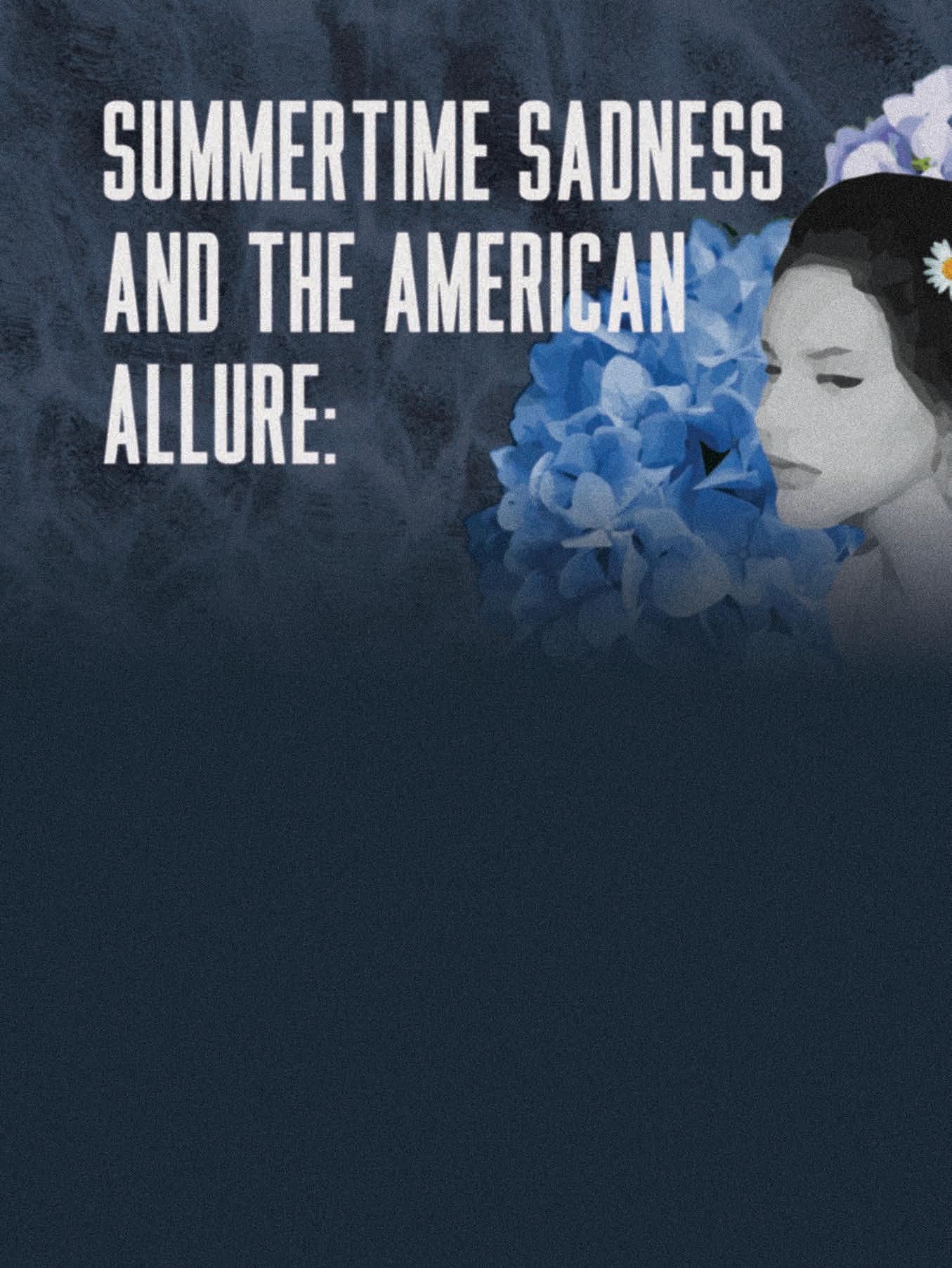
Spring 2023 Editorial 26
along with singers such as Lorde, issued in a wave of sad girl chic on social media. Notably, on Tumblr, black and white gifs from Lana Del Rey’s music videos circulated on the platform, accompanied with sad quotes from writers such as Sylvia Plath and “Lolita” author Vladimir Nabokov. However, with the subsequent releases of Honeymoon and Lust For Life, Lana Del Rey’s aesthetic returns to its baseline and becomes fully realized. Vivid lyrics including “White lines and black beaches” on the trap-inspired “Summer Bummer” and “But Hollywood legends / Will never grow old” on “Terrence Loves You” reinforce the original themes of her work without coming across as trite.
Chemtrails Over The Country Club and Blue Banisters, Lana Del Rey’s seventh and eighth albums respectively, are more introspective in nature. Following the release of her poetry book, Violets Bent Backwards over the Grass, Lana Del Rey worked with producer Jack Antonoff to record her seventh album. In it, she no longer romanticizes the west coast and instead celebrates the general suburban American spirit, white picket fences and all. On “Tulsa Jesus Freak,” Lana Del Rey references Arkansas in place of California, and on “Let Me Love You Like A Woman,” almost whispers “I only mention it cause I’m ready to leave L.A.” as if she’s making a confession. In a sense she has traded her romantic daydreams from Honeymoon for reality without shedding the haunting quality that characterizes her work. She also abandons the ornate music of Born To Die and the baroque pop of Paradise for a folk-inspired style. Blue Banisters reflects the same homely Americana as its predecessor. The bells and whistles are notably absent, and Lana Del Rey’s insightful maturity augments her typical melancholia. The poetry of Normal Fucking Rockwell!, Lana Del Rey’s sixth album, is presented in a more developed form with lyrics such as “All roads that lead to you as integral to me as arteries / That pump the blood that flows straight to
the heart of me,” and her trap influences from Lust For Life reappear on “Interlude - The Trio.” Blue Banisters is poignant, lucid, and honest, and Lana Del Rey successfully demonstrates her versatility by fusing her old vintage style with her new understated sound.
Norman Fucking Rockwell!, is a turning point in Lana Del Rey’s musical career—instead of defining herself through her lovers, she becomes the protagonist of her own story. She no longer views the world through rose tinted glasses and sees her partners for who they are, reflecting the realism of American illustrator Norman Rockwell. Her newfound independence and clear-sightedness are refreshing; Lana Del Rey laments that although “hope is a dangerous thing for a woman like me to have,” she has the strength to reclaim her past by powerfully stating “but I have it.” She also positions herself as an equal in her relationships on “Mariners Apartment Complex.” By changing her style from glamorously American to casually American with longer and more reflective songs, she puts herself in the spotlight and deemphasizes the importance of relationships with men in her life.
Lana Del Rey has continuously evolved her sound by combining Americana with trap, folk, pop, and other genres, and has evolved her once glamorous 50s style into something that’s unique and unequivocally hers. The longevity of her career indicates the strength of her artistry and the allure of the dream she created, and while her style and sound have changed, she remains committed to crafting songs with the power to move even the most stoic listener.
 • Bryana Dawkins (Undeclared)
Designer: Xin Li (Design)
• Bryana Dawkins (Undeclared)
Designer: Xin Li (Design)
27
Background photo by Slava Stupachenko via Unsplash
On March 16, Mannequin Pussy graced the stage of AfterHours as the headliner of this semester’s Tastemakers Presents. Throughout the set, the crowd moshed and sang along to the punk band’s hits, but the concert hit an emotional high when lead singer Marisa “Missy” Dabice led Northeastern students in a communal exercise.
“In our experience, there’s nothing more cathartic than just to let out one fucking scream,” Dabice whispered into the microphone. “If you’ve never screamed at the top of your lungs before, but you always wanted to, this is your moment.” She counted down from three, and the crowd’s animalistic roar immediately led into the next song.
Mannequin Pussy was founded in Philadelphia, Penn. in 2010. The band reached their greatest popularity yet upon their 2019 album Patience, followed by 2021’s Perfect EP. They were recently featured on the soundtrack of racing game “Forza Horizon 5: Rally Adventure,” albeit listed as “Mannequin P.” The punk band is currently recording their fourth album.
Before their electric performance, Mannequin Pussy –comprised of Dabice, Collins “Bear” Regisford, Kaleen Reading, Maxine Steen, and Carolyn Haynes – sat down with Tastemakers Magazine to discuss censorship, the punk scene, and the purpose of music.
This interview has been edited for brevity and clarity
Tastemakers Magazine (TMM): You tweeted today that some things have happened recently that have made you think about changing the band’s name. What were they?
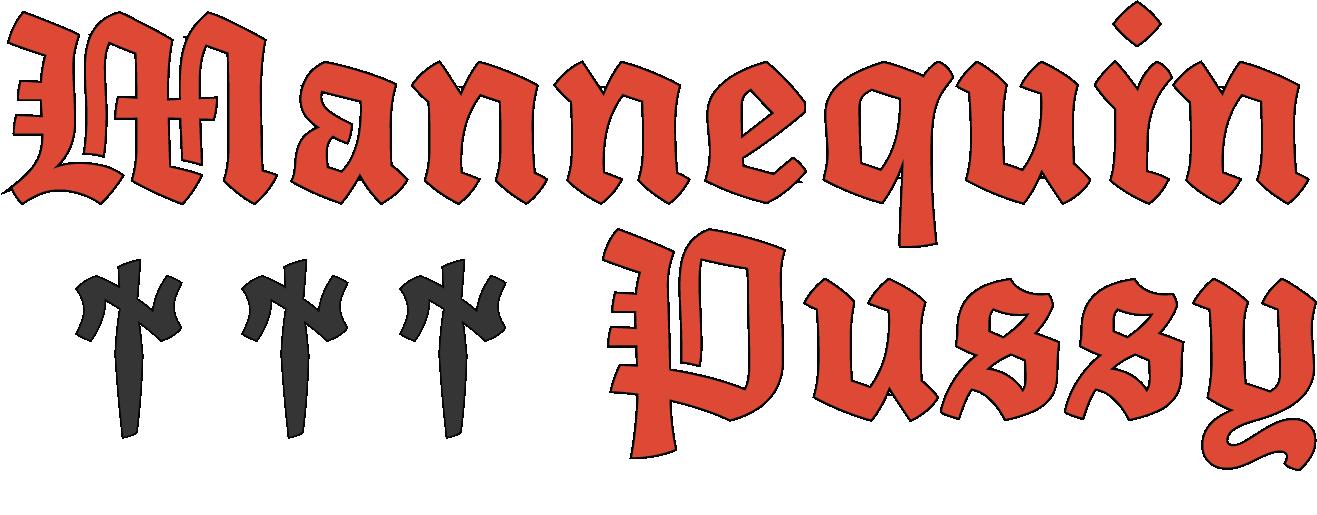
Missy Dabice: We’ve been involved with certain organizations and

opportunities where we have been forced to change our name, and not only been forced to change our name, but they’ve censored us and then decided what our name would be. Forza was one of them. We all thought that the world would become less puritanical, and in fact, the opposite has been proven to be true. We are people who strongly believe in our convictions and in our art and what we stand for and don’t consider ourselves to be obscene. And in terms of what the laws are about obscenity and censorship, we don’t think that we should be subject to that because we fall under the category of obscenity that is really protected by the arts where something is not obscene if it has an inherent social, intellectual, or artistic value. And that is exactly how we see ourselves and we know that we do.
TMM: You have expressed in interviews that even though most of your music is punk, your most popular music isn’t. How do you think that affects your image as a band?
Bear Regisford: I think it’s like a nice way to just lure them in. We still get them in with the songs that anybody could listen to – you could play it for your mom, you can play it for your brother, your sister, your grandma – and then you come in the show and then we pummel you with the rockers.
Maxine Steen: You can’t be angry all the time. It’s not realistic to just feel one way all the time.
Missy: The spectrum of human emotion is quite greater than that. So I think it’s sometimes surprising when people expect bands to be one style or one emotion all the time.
Bear: We go through a million emotions in a day. We just try to truncate it into one hour.
TMM: The length of your songs has grown a lot over the last three

Spring 2023 Feature 28
albums. Was that a conscious decision or is that just the way that your songwriting changed?
Missy: No, I don’t think anyone goes into a song being like, “this song is gonna be a minute, this song is gonna be three, this is gonna be four.” You know the song is done when you don’t feel the need to continue writing it. And with some songs, you can express exactly what it is you want to say in a minute and thirty seconds, and other songs take five minutes to get out that story.
TMM: How has the punk scene in Philadelphia changed?

Bear: The punk scene is just forever changing, and that’s the beauty of the punk scene, the DIY scene, if you will. I think the beauty of it all truly is just how resilient everybody is against the changing of times because, you know, Philly used to be the place of a billion basements and now you can hardly find a basement show. Now there’s very few DIY spots, but people are still trying. But I think the Philly scene and any scene, everyone’s just trying to thrive in the new age of like, people are moving into areas that used to have punk shows and now they don’t because it’s kind of hard to have warehouses and stuff when they’re just being reformulated into apartments, but people are making do. I recently saw that people are starting to use Twitch as a way to do shows.
Kaleen Reading: That’s cool, but it doesn’t sound as fun as being in a dirty basement. It’s like going back to quarantine.

Bear: Well, no, I’m just saying no matter what the scenario, even if there is a pandemic, they’re like, “We’re going to throw a fucking show.”
TMM: Where do you find inspiration?
Maxine: For me, it’s about what’s going on in the world. Music can be a really good distraction. I mean, I think we’re all pretty complex people. We all like a lot of different things. So I think we all kind of take from our inspiration whatever that may be. Missy: Every time I leave my house, I see something that either horrifies or delights me. And I find inspiration in all of those things. I think, unfortunately, things are more and more horrifying than they are delighting. And music is either an escapist tool or magnifying glass for what’s going on in the world in which we live. But I mean, there’s also a lot of beauty in the world. The aspiration is to contribute to that beauty and that understanding and the best parts of what makes us human and alive.
TMM: What’s your dream collaboration?

Maxine: Charli XCX.
Missy: I would love to work on a song with Charli.
Maxine: Yeah that would be a dream come true.
Missy: Doja Cat said she wanted to do a hardcore punk record. And I know she doesn’t mean pop punk. I know that she means, actually, like, aggressive music and screaming. That would be very cool. I mean Doja Cat and Mannequin Pussy would be pretty funny I think considering the pussy cat sensibility of it.
• Trevor Gardemal (Journalism)
29
Designer: Syd Tomasello ( Graphic Design )

 Rubblebucket, Big Night Live
Photo by Kimmy Curry (Design)
Bktherula, Brighton Music Hall
Photo by Victoria Brennick (Computer Science and Design)
Rubblebucket, Big Night Live
Photo by Kimmy Curry (Design)
Bktherula, Brighton Music Hall
Photo by Victoria Brennick (Computer Science and Design)
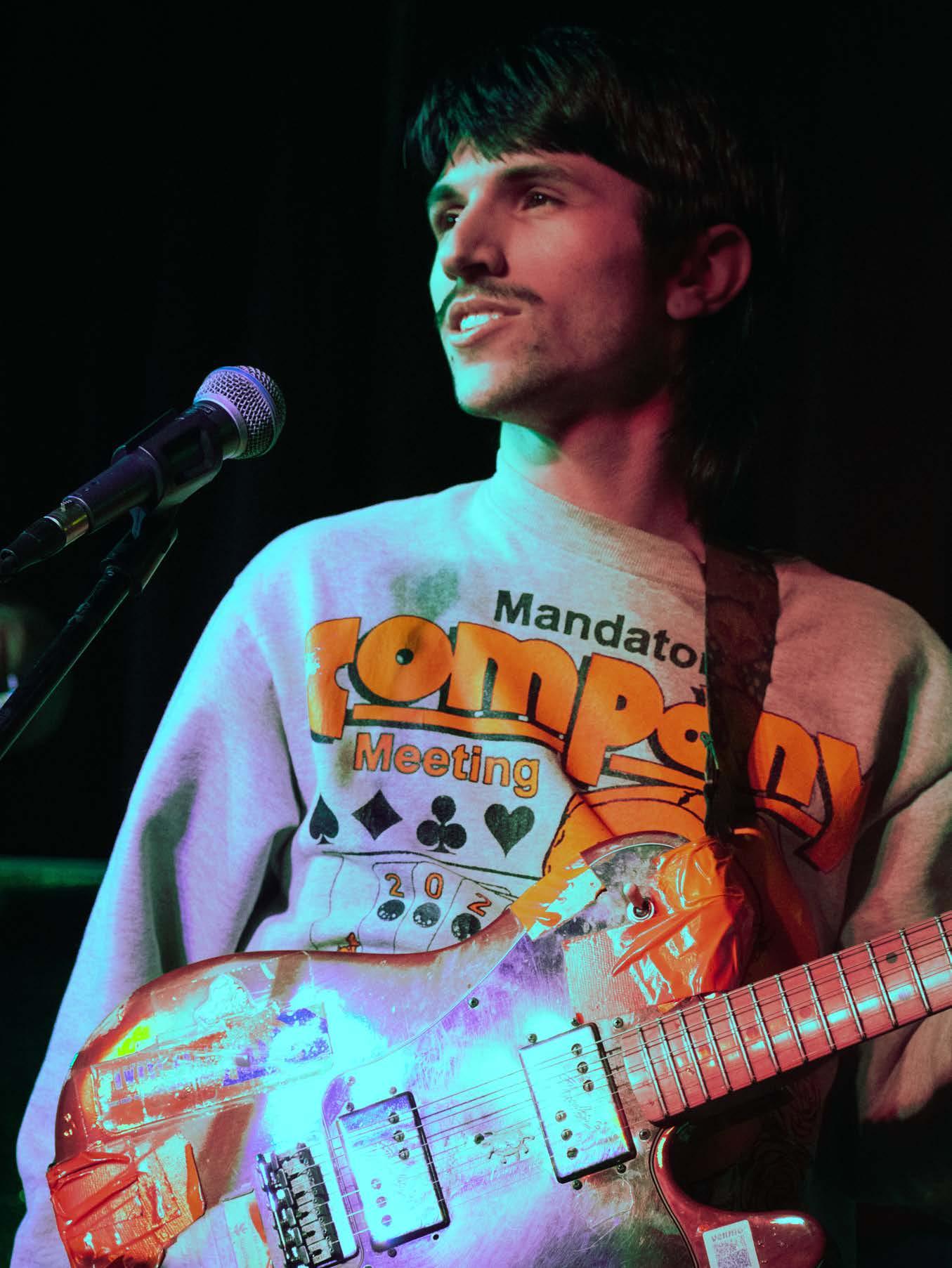 Going222jail, Afterhours
Photo by Maya Solanki (Business and Design)
Going222jail, Afterhours
Photo by Maya Solanki (Business and Design)
Abuse Isn’t Punk,


In recent years, pop punk has seen a revival, largely due to TikTok. Notoriety has been restored to Blink-182’s Travis Barker for marrying Kourtney Kardashian and appearing on their children’s accounts. The punk aesthetic has been co-opted and transformed into a PG-rated marketing tactic. More and more influencers have turned into quasi artists, donning all black and dragging Travis Barker into collabs. Nessa Barrett, Jaden Hossler (aka jxdn), and Chase Hudson (aka Lil Huddy) all seemed to transform from drama-attracting teens to angsty young adults serious about their music career. The irony of this lateral move is in the current state of the genre and music industry as a whole, full of petulant drama and controversial figures drawing attention on a nearly daily basis. The controversial figureheads of the genre, other than the attention-hungry drama queens, include groomers, who target young fans to develop inappropriate relationships, and other weirdos including Machine Gun Kelly. The problematic population migrating towards punk, specifically the sub-genres of pop punk and punk rock, is not limited to the teens of TikTok. Several problematic and predatory artists, typically ostracized rappers, have found redemption in the new space. Machine Gun Kelly is a prime example of this trend. To some, MGK comes to mind as a rapper-turned-faux rockstar, famous for such mediocre hits as “I Think I’m OKAY (feat. YUNGBLUD and Travis Barker)” from Hotel Diablo, collaborating with fellow punk rock co-opters as a transitional period to the new era. The era in question, beginning in 2020 with Tickets to my Downfall and continuing with 2022’s mainstream sellout, is an obvious surface-level ode to punk washed in black and pink. Hits off these albums include “my ex’s best friend (with blackbear)” and the infamous “emo girl (feat. WILLOW).” MGK’s reliance on collaborators to launch his music to virality is, at best, a signal to his limited knowledge of writing or producing music. The monotony in vocal performance suits the lack of substance to the lyrics and the instrumentation that was likely produced in a single afternoon. Even the Spotify canvasses for these pieces seem prefabricated based on an idea of whatever is hip with the youths, with MGK and his collaborators wearing dark colors and making silly faces to the camera.



In stark contrast, punk is known for going against the norm with shocking clothes, hair and music as a protest against authority. Along those lines, punk rock is categorized as non-conformist, featuring fast, distorted instrumentation and stripped-down guitar breaks paired with shouted lyrics raging against the machine. Comparatively, co-opters of the genre hopping onto the trend of angstiness are nothing but a corporate shill, instilling a sense of hollowness where the passion should be. By producing content with vague lyrics about being an outsider and falling in love with emo girls rather than outspoken art, these acts can hardly be considered artists, let alone punk rockers. Nevertheless, there seems to be a large population of toxic, problematic musicians — especially mediocre rappers — flocking to punk rock to save their career amidst attempts to cancel them.
Perhaps unsurprisingly, others know Machine Gun Kelly for much more sinister reasons than his sub-par artistry. The musician has a deep-rooted connection with pedophilia and abuse, starting with the beginning of his career and continuing to his present relationship with actress Megan Fox. In 2013, as his career was beginning to reach wider audiences,the then-23 year old made revolting comments about the then-17 year old model Kendall Jenner. In an interview with Fuse, he dismissed pedophilia as okay — as long as you’re a successful man, that is. After citing his idols Robert Plant and Axl Rose, also groomers, he said: “I don’t care, say what you want, man, if Kendall Jenner is in your bedroom naked and you’re 50, you’re going.” Even before the notorious interview, MGK was on thin ice for pedophilic behavior, fueling a still-ongoing feud between himself and Eminem. Despite being 23 at the time, he tweeted that Eminem’s then 16-year old daughter, Hailie Jade, was “hot as f–k.” Time has not improved the artist’s relationship with women, even after having a teen daughter of his own. Recently, his relationship with actress and sex symbol Megan Fox has been fraught with rumors of infidelity and abuse, with the duo allegedly splitting following a cheating scandal. Other strange and toxic motifs mark their relationship, like supposed blood rituals and a thorny engagement ring preventing Fox from being able to take it off.
Machine Gun Kelly isn’t the only slimy musician slinking down the pipeline from problematic rapper to terrible pop punk artist. Steven
Spring 2023 Feature 32
Markowitz, known professionally as Hoodie Allen, hit his prime in the mid-2010s with frat-rap albums All American (2012) and Happy Camper (2016) among other popular releases. He and his collaborators were known for personally interacting inappropriately with their fans, who included a population of teenage girls while he himself was in his late twenties.But his success finally came crashing down in the midst of his Whatever USA tour, following the release of its namesake album in 2019. Former fans came forward as victims of grooming and sexual assault at the hands of his touring crew — as well as Markowitz himself. The artist took to Twitter claiming to have fired the bandmate, who doubled as a close friend to the artist, but failed to accept responsibility for his pedophilic behaviors. In 2022, two years after the fact, his insignificant apology was overridden with the news that Hoodie was back, this time with a pop punk track, “Wouldn’t That Be Nice,” about a break up with a lying woman. Similarly to MGK, his monotone vocals and weak singing are masked by being called “emo,” on top of the bad taste of claiming to be the victim. This trend of heinous men using the punk genre to cover up their wrongdoings begs the question, what is punk and why is it drawing so much attention from the wrong audience?




As formerly mentioned, punk is a counter culture movement based on shocking moves to protest authority. These stylistic choices, rich in meaning, can easily be perverted to surface level aesthetics and “edgy” moves by attention-seekers. Rebellion for change becomes rebellion against laws about consent and common decency. And in young teens with undeveloped frontal lobes, falling victim to faux punk rockers has become easier than ever. With social media, namely TikTok and fan fiction site Wattpad, toxic romances are seen as normal, even desirable. Combined with the egomania of fame, stars like Hoodie Allen and Machine Gun Kelly cannot help but give in to the young women who are all but falling at their feet for being cool and famous, feeding into the pipeline of problematic to punk. Admiration turns into streams, the force driving the music industry and exacerbating the vicious cycle giving power to people that should be behind bars rather than in front of an audience. In an ideal world, the rapidly changing trend cycles on TikTok will leave these men behind, with nothing but their poorly painted nails to show for their choices in the pop punk revolution.



 • Julia Towne (SLPA and Communications
• Julia Towne (SLPA and Communications
33
Designer: Ava Ackerman (Business and Design)
Album Reviews
Caroline Polachek Desire, I Want to Turn Into You
Released February 14, 2023
Label Perpetual Novice
Genre Pop
Tasty Tracks “Blood and Butter”, “I Believe”, “Bunny is a Rider”
There is something innately human about the desire to drop everything and run. This phenomenon, known as “the call of the void,” is that voice deep in your head that tells you to throw yourself into the unknown. There are times when we can get lost in our daily lives and lose our sense of self. In that, we want to be spontaneous and take a vacation in the mundanity. Caroline Polachek tries — and for the most part succeeds — at vocalizing this feeling on her newest album, the aptly titled Desire, I Want to Turn Into You
Polachek takes what she does best, art pop, and expands further on what can be done within the pop-scape, incorporating new sounds that give each song a unique melodic flavor that works together in harmony. It manages to wrap the lofty touches of Bjork’s Vespertine, vast pluckings of Spanish guitars, and the breezy sound of Colbie Caillat into one project. All of these sounds act as a marker of Polacheck’s crafted chaos. While there are some standard pop songs, like the zany yet ultra-catchy “Bunny is a Rider,” they balance out nicely with some of the album’s more experimental tracks.
The opener “Welcome to My Island” thrusts the listener into her modern manifesto
of human desires with Polachek’s unique screaming harmonies. These screeches can be off putting, but it all makes sense once the sunshiny guitar strums and enthusiastic chants of “hey! hey! hey! hey!” enter. She breathes life into her new world full of swaying palm trees and bright blue oceans, only for her to turn into a shouty, sing-songy verse about self-doubt and the fear of disappointment. The lyrics come off as a bit shallow, but it’s simplistic nature allows you to adapt to the rest of the album. This song is not an overt greeting as an introduction into the album, but rather a brief peek into her hazy madness. It’s the theme song of a travel advertisement from the government tourism board of Polachekia — a land trying to harbor a laid back sense of the chaotic human spirit.
The strongest parts of this dynamic album are found in the two tracks “Blood and Butter’’ and “I Believe.” The first is a lusty, upbeat song with left-of-center yet on theme descriptions of intimacy. She mixes the sounds of flamenco with Irish bagpipes that marry into a strangely efficient and catchy rhythm. The carnal human ego peaks out with lyrics of Polachek’s world being a bed and having “holy water and fire in our eyes.” The title itself conjures up dark images of fatty red globs, but the instrumental brightness of the track contrasts its themes nicely. “I Believe” is like a scrapped song on a Hannah Montana soundtrack, with lyrics that empower the listener to embrace life without uncertainty and have hope in the future. This song is dedicated to the late producer SOPHIE, who paved new experimental paths for artists like Polachek to go down. There is something endearing about the lyrics, like “To find you in this life and keep you just enough.” While themes of love — both inwards and outwards — and hope are not anything new in pop music, Polachek delivers them earnestly. It’s easy to write off uplifting messaging as generic or even corny, but in this album, they come wrapped in a sonically interesting package. Where the aforementioned songs had a bold and strong sound that gelled together, her emboldened chaos falls a bit short in songs with less structure and too much flub. These tracks include “Fly To You,” a Pink Pantheress rip off using the popular “breakcore” fast-paced drum line. It overwhelms the listening experience and would have probably benefited from its
absence. Where this cluttered beat flubs, the opposite happens on “Hopedrunk Everasking,” where Polachek confusedly warbles about a tunnel of love and losing yourself in it. This puts a damper on the imaginative spirit of the project as it lulls the listener out of the musical vacation. The problems with both these songs is an imbalance in the album’s established entropy, where one song has too much going on and the other doesn’t have enough of it.
However, at the end of the record she picks up from this slight derailment with “Smoke.” The cheeky lyric “it’s just smoke on a volcano,” essentially says “Maybe, there is a volcanic eruption happening, but that’s none of anyone’s business.” The track pairs deep electronic crashes with light and breathy vocals, once again playing into this sense of unbridled passion. This track, along with “Billions,” ends the album on an ear tingling note as the listener is left to ponder on their own wants and desires.

This album is a step up from the preceding Pang, a weirder and softer stage in the evolution of her music. Where she was still trying to harness her talents on Pang, Desire, I Want To Turn Into You cements Polachek as a bubbling star in the alternative pop world with her out-of-the-box approach. While she hits the same familiar beats of formulaic pop, her vocal stylings soar with luxurious instruments to match.
Thomas Paulus (Cell and Molecular Biology)
10 7 3 9 6 2 8 4 5 1 Fresh Spring 2023 Reviews 34
Masego Masego
Released March 3, 2023
Label EQT Recordings/Capitol Records
Genre Soul/Jazz
Tasty Tracks “Sax Fifth Avenue,” “Say You Want Me,” “Two Sides (I’m So Gemini)”
With a Midas touch for every genre he creates music in, Masego radiates unwavering confidence in his craft through his newest self-titled album. With no features or collaborations, Masego eagerly places himself center stage for the world to give him his welldeserved roses. Through intricate layering of hooks, melodies, instruments, and samples, he breathes life into this project and shows nothing but immense growth and purpose with his pen. Dipping his toes into new styles and techniques, one thing is certain: Masego is in his prime.
While prior Masego works excelled at their use of steady bass lines intertwined with fickle instrumental loops, this album takes on sampling with a renewed excitement. The opener “Black Anime” unexpectedly interpolates drum work and lyrics from the infamous “Cha Cha Slide” by DJ Casper. The sample dances playfully over his own lyrics as he parades around with contagious energy; after all, the lighthearted nature of the Cha Cha slide undoubtedly personifies his “Mulah dreams” and “Money plans.” Money — whether it’s the insecurity of lacking it or the glory of having it — plays a major role in the narrative of the album. Here, he happily approaches the concept using the
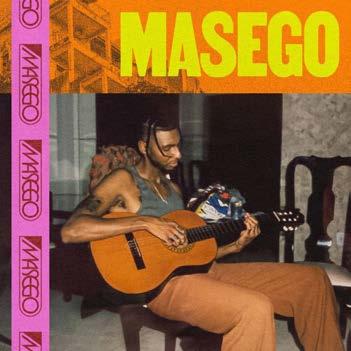
whimsy of the sample, relieving the pressure money inherently places on artists. He continues his skillful use of samples in “What You Wanna Try” when he blends together vocal riffs from his own 2018 song “I Had A Vision” and melodies from “Tom’s Diner” by Suzanne Vega. He brings two opposite, and even conflicting threads and connects them through strong production.
Thematically, Masego continues to toy with how he conceptualizes money in the creative space on “Sax Fifth Avenue,” manifesting an internal conflict between chasing money and chasing passion. Using a play on words that rings true to his career, he jokes that “Saks Fifth Avenue is where they pay [him] loads.” The saxophone is one of his strongest talents, but it duels with the “Saks” in the song, or the representation of wealth. He shares his experiences busking outside Saks Fifth Avenue in an effort to support himself, and allows his delivery to pave his storytelling. His punctuated, sharp vocals as he sings “doin’ it for the love won’t pay the bills” and “love won’t keep my lights on” allows for Masego to confide in his listeners, sharing the uncertainty he continues to face in his career. His vulnerability in an otherwise upbeat song defines his deeply emotional connection to his music, and demonstrates authenticity. The soft but pronounced notes compose an incredibly catchy track, with guitar lines that sparkle in some verses and sink heavily in others, and of course, smooth saxophone riffs that compliment its themes. The song is a culmination of the best of Masego, and is easily one of the highlights of the album.
Beyond the sampling and storytelling, Masego powerfully fuses songs into one another, creating a seamless listening experience while exploring different sounds. One of the most compelling connections is between “Say You Want Me” and “Two Sides (I’m So Gemini)” as they tackle two opposing styles. “Say You Want Me” uses fast-paced, energetic Afrobeats which allures listeners and wraps them in the intoxicating, looping rhythm. The song instills a welcome, inviting pulse and plants a memorable hook that syncs perfectly with the drums. As Masego finishes his last chorus, the rhythm is sustained and slowly balances the prominent keyboard loop of “Two Sides (I’m So Gemini),” fading perfectly into the start of the song. However, as the track begins, the drum line
switches into a classic R&B beat with punchy snares and raunchy, flirtatious vocals. The transition between these two songs as well as the transitions throughout the project are a testament to Masego’s ever-calculated approach to his music. The intentionality behind every note, every lyric, and every beat continues to showcase his ingenious technique and places Masego among his most creatively rich releases.
As well-crafted as the album is, the only songs that are lacking are the ones that didn’t produce the same golden mesh between meticulous production, stellar instrumental performance, and lovely vocals. “Afraid of Water” is a particularly difficult listen, as the lyrics are as shallow as the subject matter, and the vocal performance was uncomfortably whiny.. “Down In The Dumps,” on the other hand, has soulful vocals and compelling verses, but the production is harder to buy into; a relatively depressing beat and worse electronic synths make the vocals go to waste.
Masego is a breath of fresh air in all genres it approaches. At times, new releases — especially in trap and R&B — become oversaturated with repetitive tracks, similar flows, and nearly identical subject matter, making new releases seem quite vanilla. Masego’s artistic fusion of these styles revives them with incomparable precision and care, illustrating his versatility and gift as a musician. His fresh and dynamic sound allows him to innovate in the studio and produce captivating, indelible music that you simply cannot get enough of. Following Masego, there are limitless possibilities for him; it’s hard to expect anything besides more success, notoriety, and of course, more phenomenal music.
Snehaa Ram (Business and Communications)
10 7 3 9 6 2 8 4 5 1 Fresh 35
Show Reviews
Sean Kingston The Royale 2.16.23
Whether you know it or not, you’ve heard Sean Kingston’s music. At 17, the artist released his hit single “Beautiful Girls.” which peaked at the top of the Billboard Top 100. Kingston has been quietly prolific, touring with Gwen Stefani, Kelly Clarkson, and Beyoncé and releasing songs with Nicki Minaj, Justin Bieber, and Kanye West. Now, he’s found himself in Boston performing for Plugged University, a company that, according to their website, plans the “hottest exclusive college events in the country.”
Kingston has, for the past few years, been coasting off his admittedly iconic catalog of college party songs, something he and his team seem to understand. The night started with Plugged University’s in-house DJ (whose name wasn’t available on stage or any website) playing early to mid-2000’s college hits that share similar spaces as Kingston’s most popular music. Tracks such as Rihanna’s “Don’t Stop The Music” and Usher’s “Yeah!,” which put the audience in the perfect mindset for Kingston’s performance.
By the time Kingston took the stage, the audience was ready to play along with the atmosphere of the night. Close your eyes and The Royale became a frat basement or high school party — except with some improved speakers and strobe lights. Kingston opened with one of his biggest hits “Take You There,” and the audience immediately joined in the singing. Kingston performed the song as if it was second nature to him, comfortably walking back and forth along the stage knowing when to sing, and when to let the backing track take over.
Continuing from the opening song, Kingston thanked the audience for being there, going as far as to say that he “loved us for life.” This moment of gratitude moved into Kingston asking the venue to turn off the lights, and for the audience to turn their flashlights on. Sitting in darkness and silence, flashlights in the air, the audience began to stir with excitement as to what Kingston was about to pull when they suddenly heard a soft, strained “You’re way too beautiful girl, that’s why it’ll never work.” One thing Kingston proved in this performance is that he cannot be accused of using autotune. Regardless, the audience was immediately game to play along and help him out, singing what they could of “Beautiful Girls” until the backing track returned to provide the heavy lifting. A truly inspiring moment.
Kingston, clearly touched by the audience interaction, finished the song and explained that he was only asked to come and showcase three songs, but that, because of his love for us (which remember, he said was “for life,”) he would be performing more. He then launched into a four song stretch of even more recognizable tracks, including “Eenie Meenie,” “Beat It,” and “Fire Burning.” Further indicative of the night’s atmosphere and the setlist overall, Kingston also covered Iyaz’s 2009 hit “Replay,” which, while not by Kingston, does fill the same space of nostalgic, pre-2010 hits.
Once he finished his seven songs, Kingston thanked his audience one last time, reminded us that he “loves us for life” and left the stage. The setlist was short but sweet, and he was applauded as he ran off stage
and the Plugged University DJ took back control. While he may not be touring with Beyoncé ever again, the night highlighted that Kingston will always have a place in the hearts of 2000s kids everywhere, bringing genuine joy to many as his unmistakable, nostalgia filled hits remain.
James Ryan (Communications and Media Studies)
Spring 2023 Reviews 36
Weyes Blood House of Blues 03.05.23
Two-thirds of the way through her set, Natalie Merling, better known as Weyes Blood, paused before posing a question to the audience: “How many people believe in astrology?”
A sizable portion of the crowd erupted in cheers before she quickly shut it down.
“It’s made up,” she retorted, receiving laughter and applause from the larger group of nonbelievers. “I am on a crusade to cancel it.”
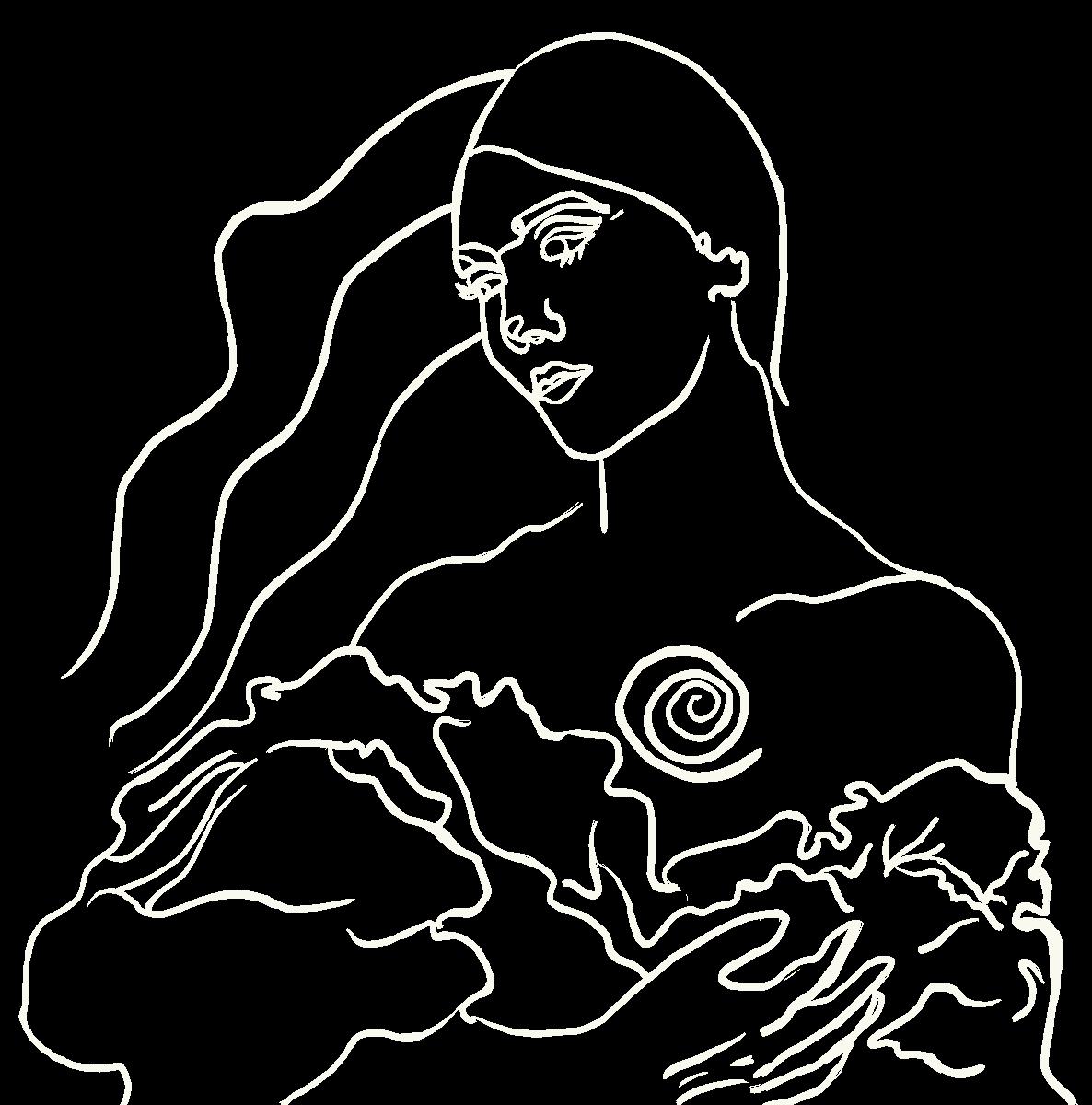

Such facetious audience interactions were a big part of Merling’s stage show, and were a funny contrast between her ethereal, spellbinding vocal performances many have come to expect. Playing one of their biggest shows in America to date, Weyes Blood and her four-piece backing band delivered hit after hit, illuminating Roadrunner with her candlelit, forlorn ballads from Titanic Rising and her newest album, And In The Darkness, Hearts Aglow
The night was kicked off by Molly Lewis, a professional whistler. Yes, a professional whistler. Lewis, in a black, sparkly gown, hit the stage whistling along to bossa nova backing tracks without warning. After her first song concluded and thunderous applause poured in, she clarified her job title, explaining she whistles because she can’t sing. Alongside her breezy originals and Romantic era covers, she delighted the crowd with awkward dancing and self-deprecating humor. Lewis was a fantastic opener that was novel enough to stick in everybody’s mind after the show with legitimate talent to back it up.
Weyes Blood flowed on stage shortly thereafter in a long white gown, her backing band trickling in behind her. Immediately upon launching into “It’s Not Just Me, It’s Everybody” and “Children Of The Empire,” the sheer power of her voice commanded attention, sounding exactly the same as on studio recordings. She navigated the highs and lows of her range with meticulous precision, all while deftly switching between acoustic guitar and piano throughout the set.
Intentionally plain visuals backed her for most of the night. There was little else to catch the eye besides multiple candelabras, a glowing heart inside Merling’s dress akin to the Hearts Aglow album cover, and standard colored lighting. Though some flourishes could’ve helped the presentation of a few songs, the muted energy of the show didn’t call for too much extravagance — plus, it made the moments with strong visuals stick out that much more. “God Turn Me Into A Flower” featured a gorgeous short film of chopped up pieces of media created by documentarian Adam Curtis. During “Movies,” maybe the most stunning performance of the night, Merling was spotlit in its ambient first half, her face awash in turquoise light, before strobe hits accentuated the song’s cathartic turn into violin and drum passages. The crowd, though not necessarily energetic, was swooning throughout the set. The hushed, collective voice utilized to sing along to “Andromeda” and fill backing vocals for “A Lot’s Gonna Change” felt like warm mist on top of Merling’s thunderous vocals.
During other songs, like “A Given Thing,” the atmosphere was so still the pipes, gushing with water, in the back of the venue were audible, laying ambient groundwork for Merling and the accompanying piano. It truly speaks to how transfixing Weyes Blood’s stage show is that she and her band commanded the stage with far less theatrics than Roadrunner shows are accustomed to. In between songs, Merling broke the alluring spell of her music by talking to the audience, her raspy tone and colloquialisms in contrast with her musical mystique. Aside from labeling astrology fake (but fun), she joked with the audience about New York City being inferior to Boston, reaching the “rave portion” of the set once “Twin Flame” started — a track far more reminiscent of Beach House than Daft Punk, and how she nearly broke her microphone and one of the candelabras during the second half of “Movies” due to her unencumbered dancing.
Ultimately, Merling’s genuine appreciation for the large Boston crowd was evident. She appeared visibly moved by the audience reception, basking in the long applause break after both “Movies” and the solo version of “Picture Me Better” with a grin visible from the furthest reaches of the venue. The rich haziness of her performance mixed with her on-stage banter concocted an unforgettable night at Roadrunner. Weyes Blood simultaneously enhanced her enchanting aura as a musician while leveling herself with the rapt crowd. Who’s to say how big her audience will be next time she comes around.
Henry Bova (Journalism)
Designer : Jamie Tishkoff (Business and Design)
37
CROSSWORD (Colors Edition)

ACROSS
2. What is our favorite song to sing at Beanpot?
4. Tyler wants a ‘__car garage, full tank of the gas’

6. What does Chief Keef hate being?
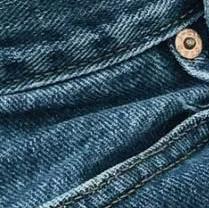
7. Who headlined SpringFest 2023?
9. What does Lana say is under Ocean Blvd?

DOWN

1. What don’t boys do, according to The Cure?
3. Which Stranger Things star is the daughter of Uma Thurman?
4. Who does Jack Harlow sample in his hit song ‘First Class’?
5. Who is Taylor Swift’s ‘Wildest Dreams’ about?

8. What genre evolved out of R&B, soul, and jazz in the 1960s?

Across: 2. StacysMom 4. Five 6. Sober 7. Amine 9. ATunnel Down: 1. Cry 3. MayaHawke 4. Fergie 5. HarryStyles 8. Funk
Can you tell which six album covers we’ve zoomed in on? 1st Row: Boy In Jeans- Ryan Beatty Hozier- Hozier grow your hair long if you’re wanting to see something that you can change- Field Medic 2nd Row: Like a Prayer- Madonna Kind Krow- Conan Gray Born In The U.S.A.- Bruce Springsteen
ZOOMED
 John Mayer, TD Garden
Photo by Emily Gringorten (Computer Science)
John Mayer, TD Garden
Photo by Emily Gringorten (Computer Science)
TMM TMM








 Samia, House of Blues
Photo by Emily Greenberg (Communications)
Samia, House of Blues
Photo by Emily Greenberg (Communications)



 • Katherine Miner (Music)
• Katherine Miner (Music)

 Chiiild, The Sinclair
Photo by Brinda Dhawan (Electrical Engineering)
Elderbrook, Royal
Photo by Emily Zakrzewski (Civil Engineering)
Chiiild, The Sinclair
Photo by Brinda Dhawan (Electrical Engineering)
Elderbrook, Royal
Photo by Emily Zakrzewski (Civil Engineering)

































 • Bryana Dawkins (Undeclared)
Designer: Xin Li (Design)
• Bryana Dawkins (Undeclared)
Designer: Xin Li (Design)






 Rubblebucket, Big Night Live
Photo by Kimmy Curry (Design)
Bktherula, Brighton Music Hall
Photo by Victoria Brennick (Computer Science and Design)
Rubblebucket, Big Night Live
Photo by Kimmy Curry (Design)
Bktherula, Brighton Music Hall
Photo by Victoria Brennick (Computer Science and Design)
 Going222jail, Afterhours
Photo by Maya Solanki (Business and Design)
Going222jail, Afterhours
Photo by Maya Solanki (Business and Design)











 • Julia Towne (SLPA and Communications
• Julia Towne (SLPA and Communications











 John Mayer, TD Garden
Photo by Emily Gringorten (Computer Science)
John Mayer, TD Garden
Photo by Emily Gringorten (Computer Science)
